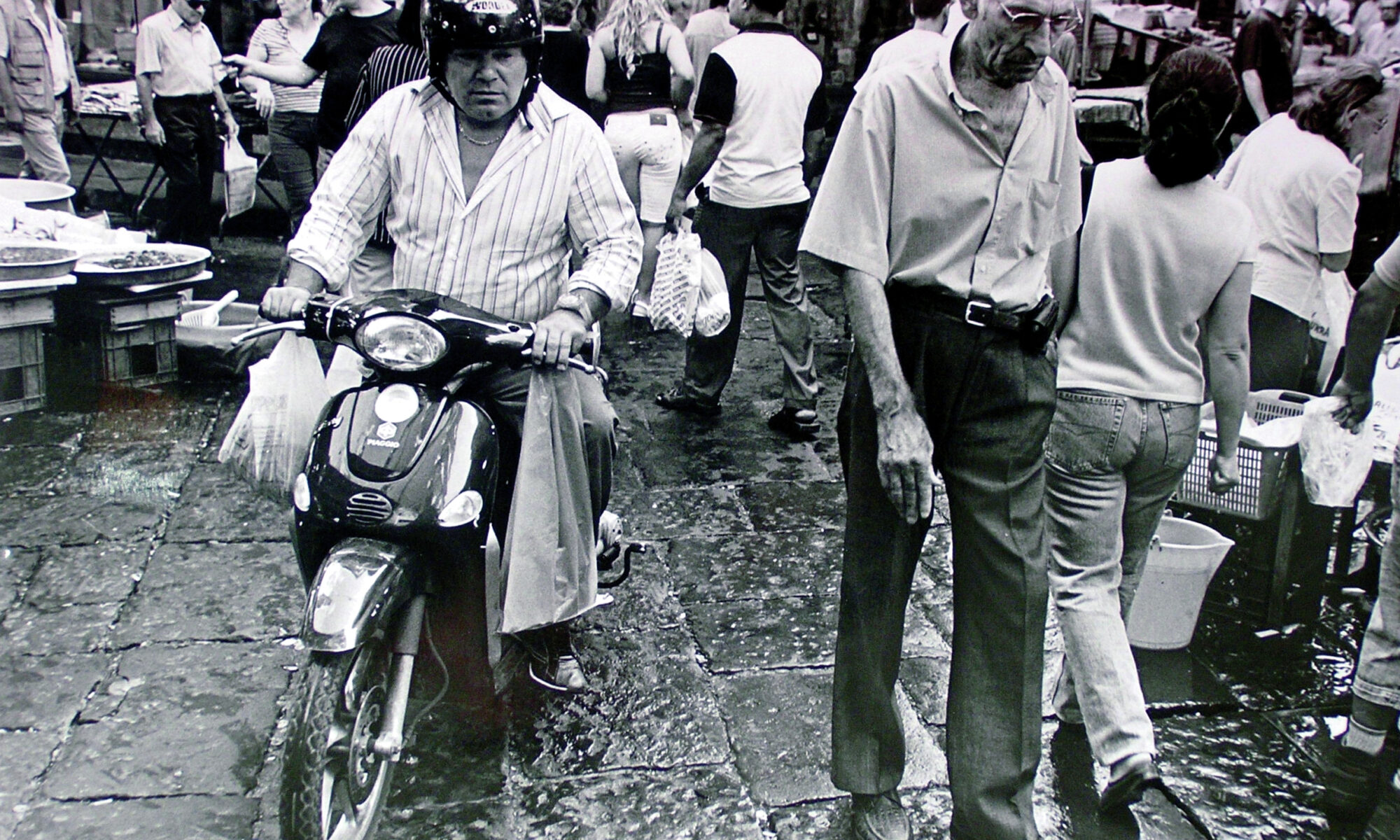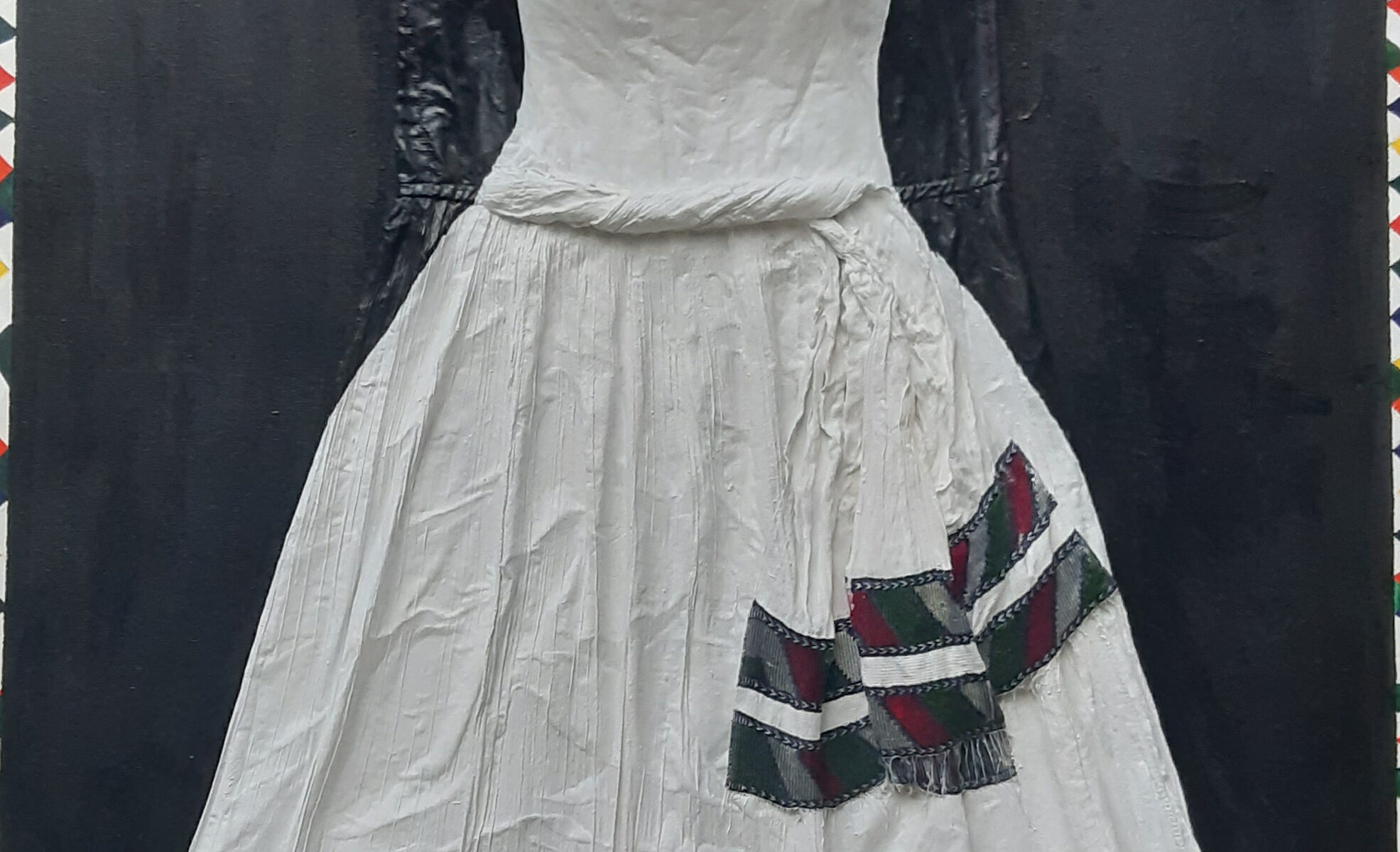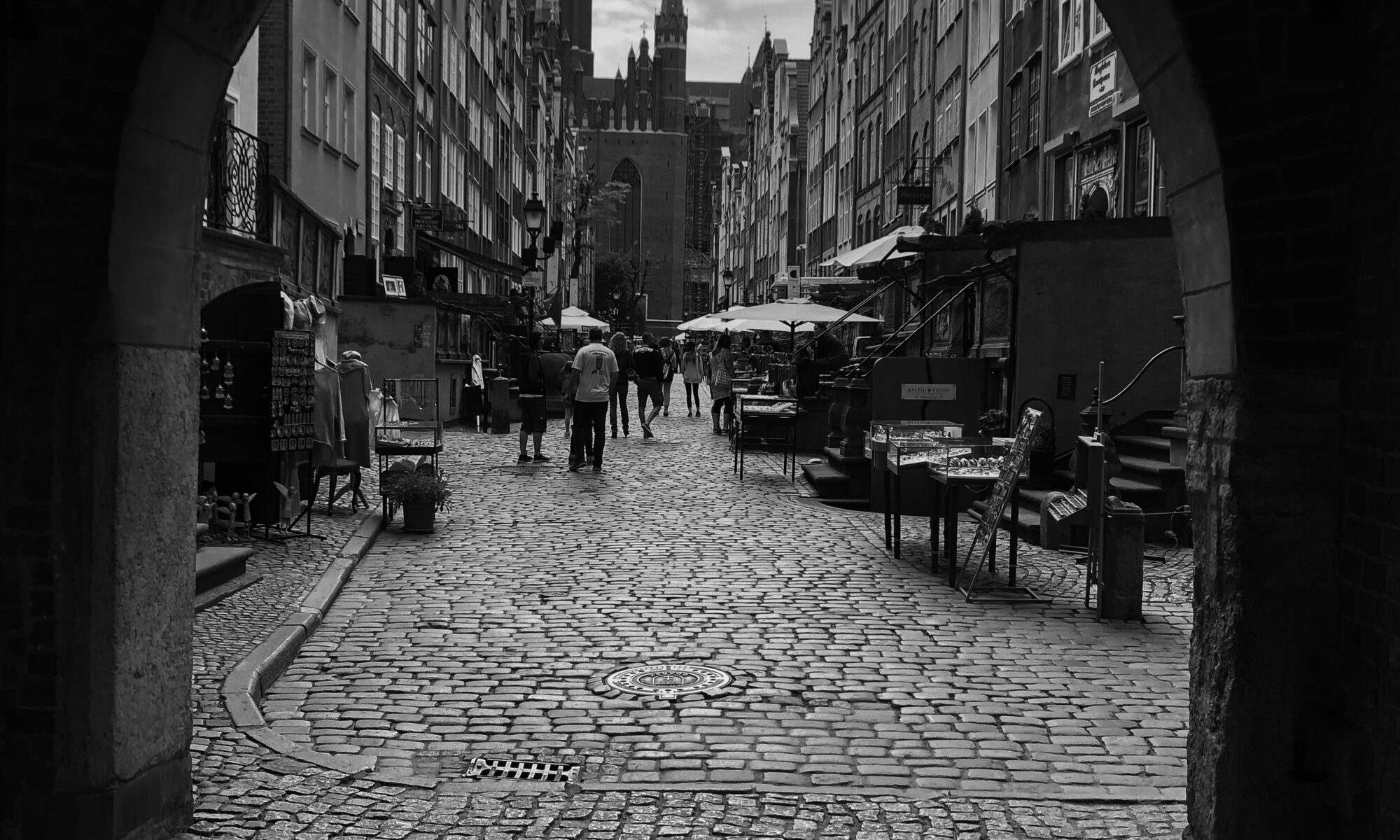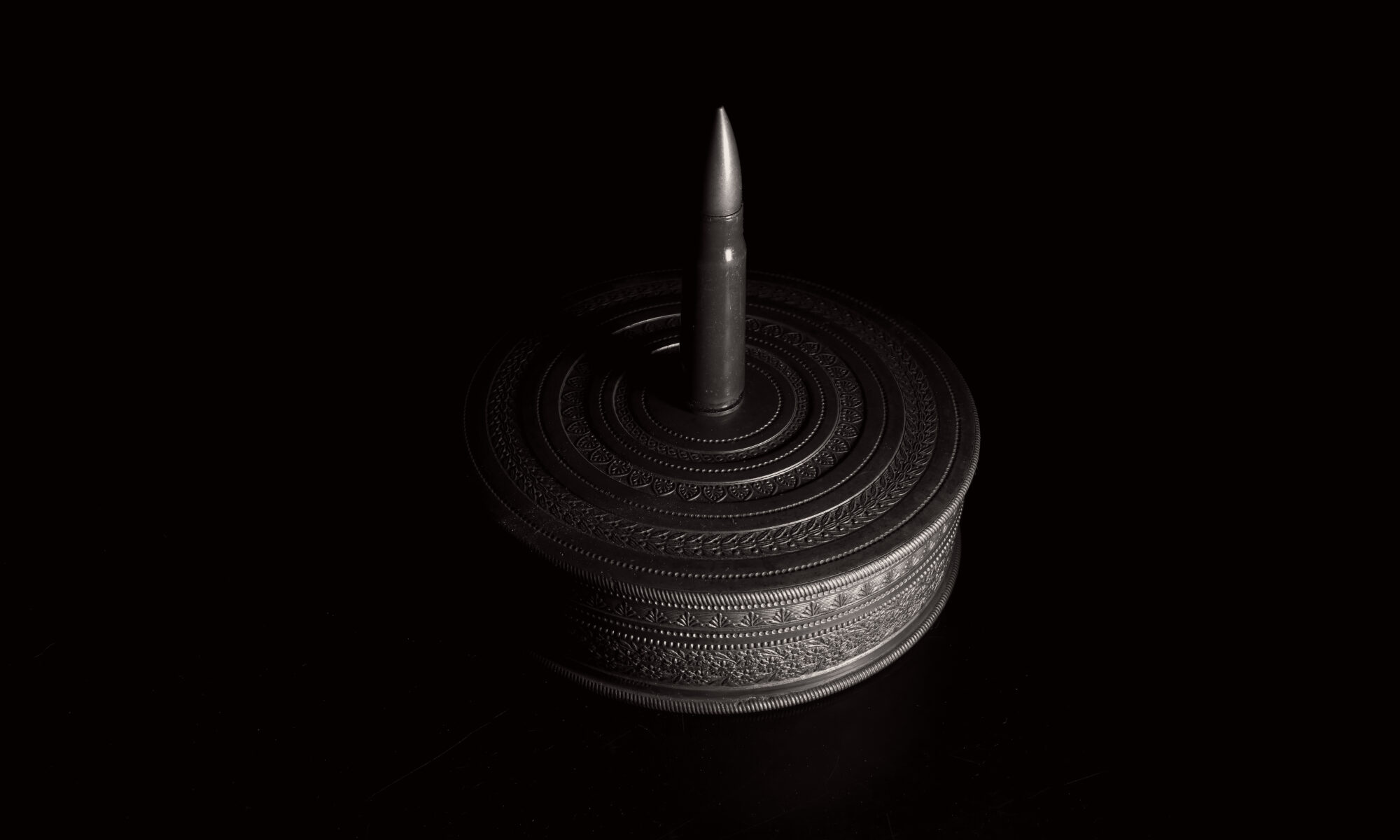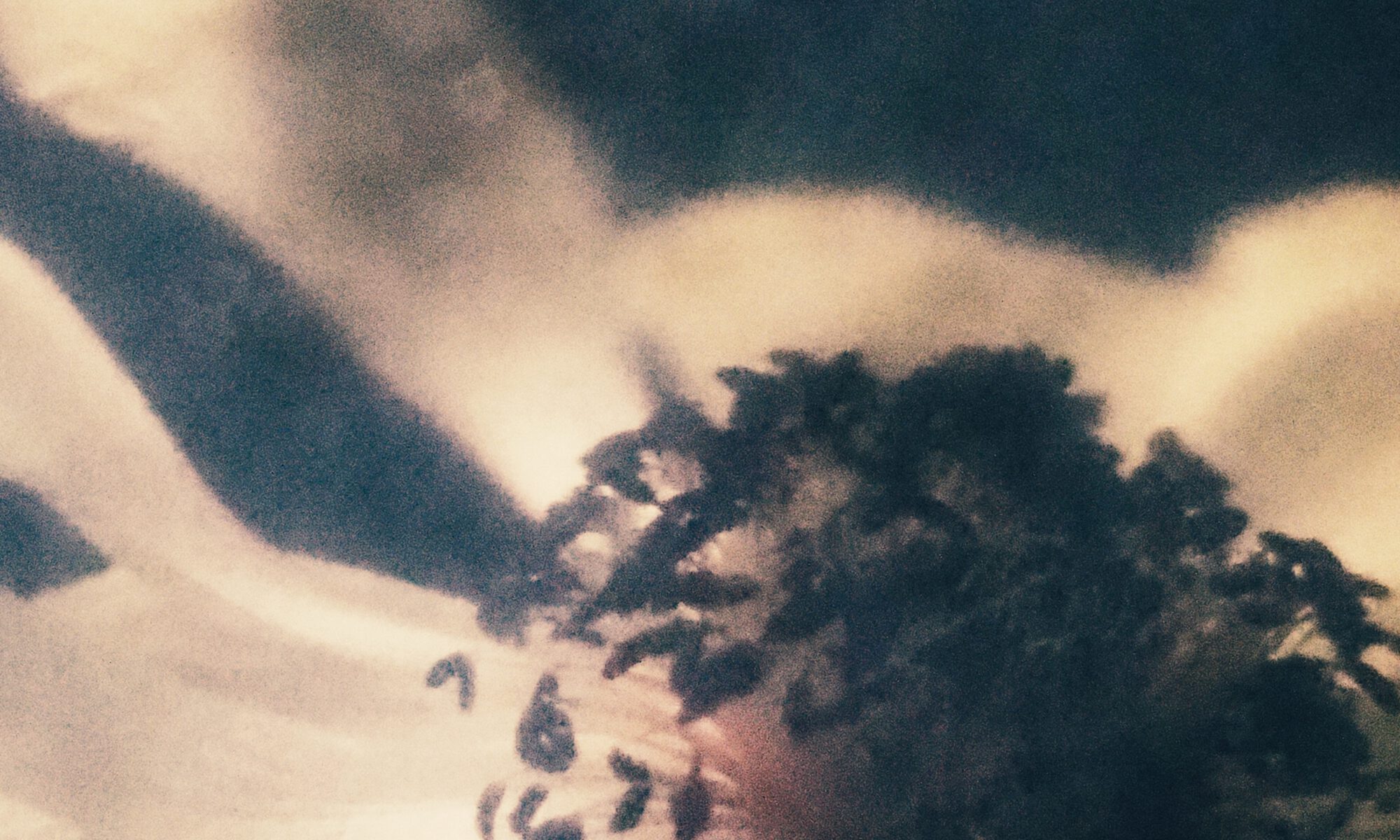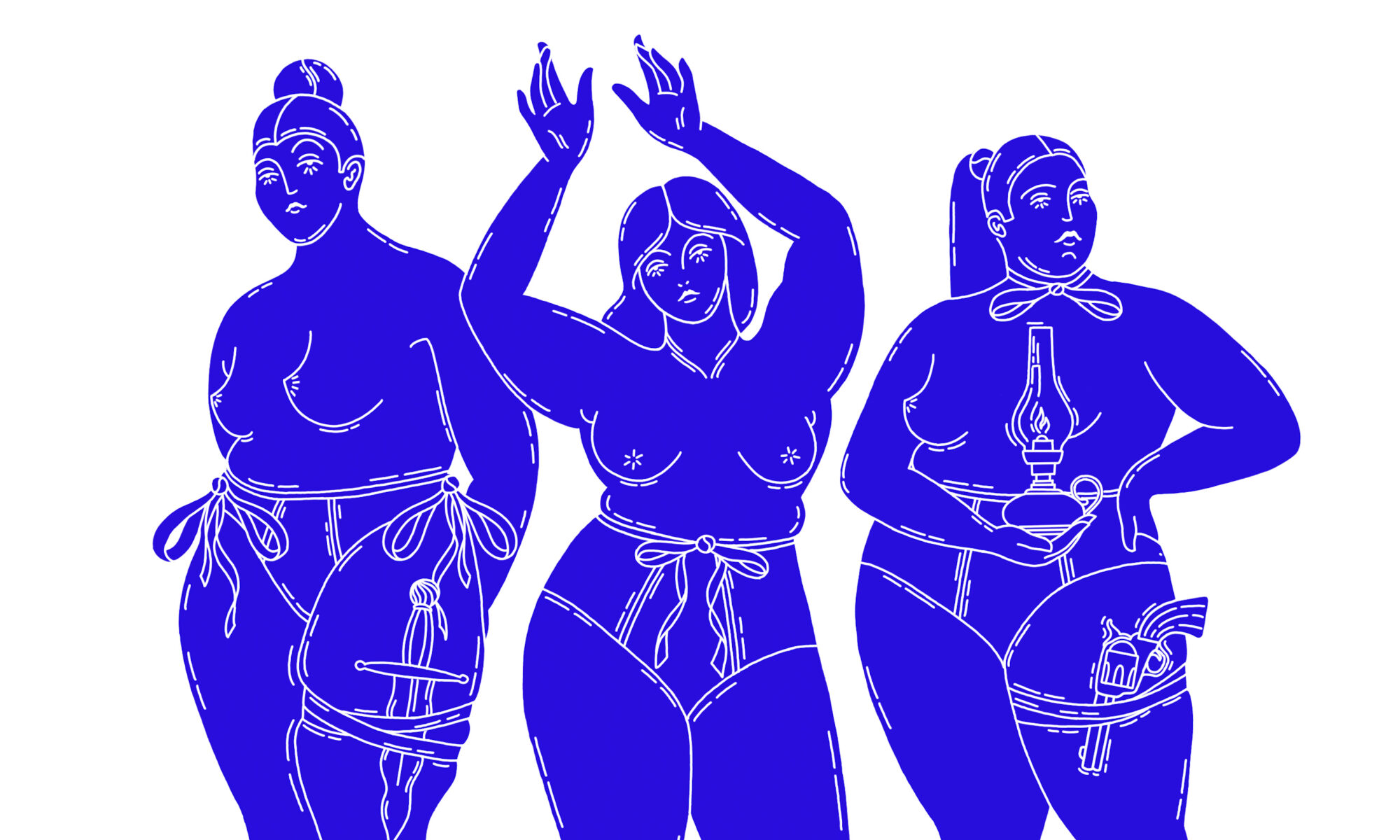Unsere Themen
Menü
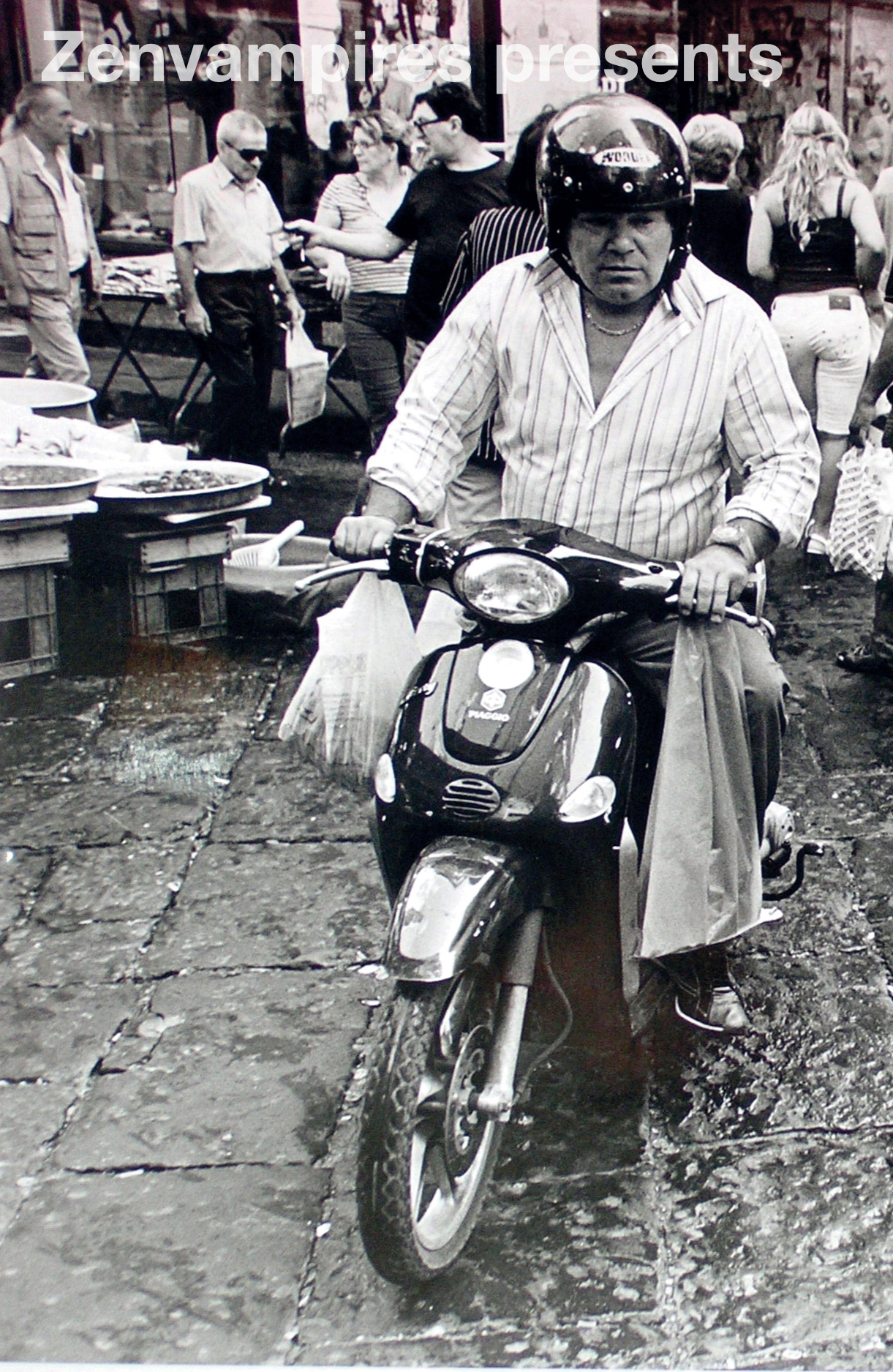
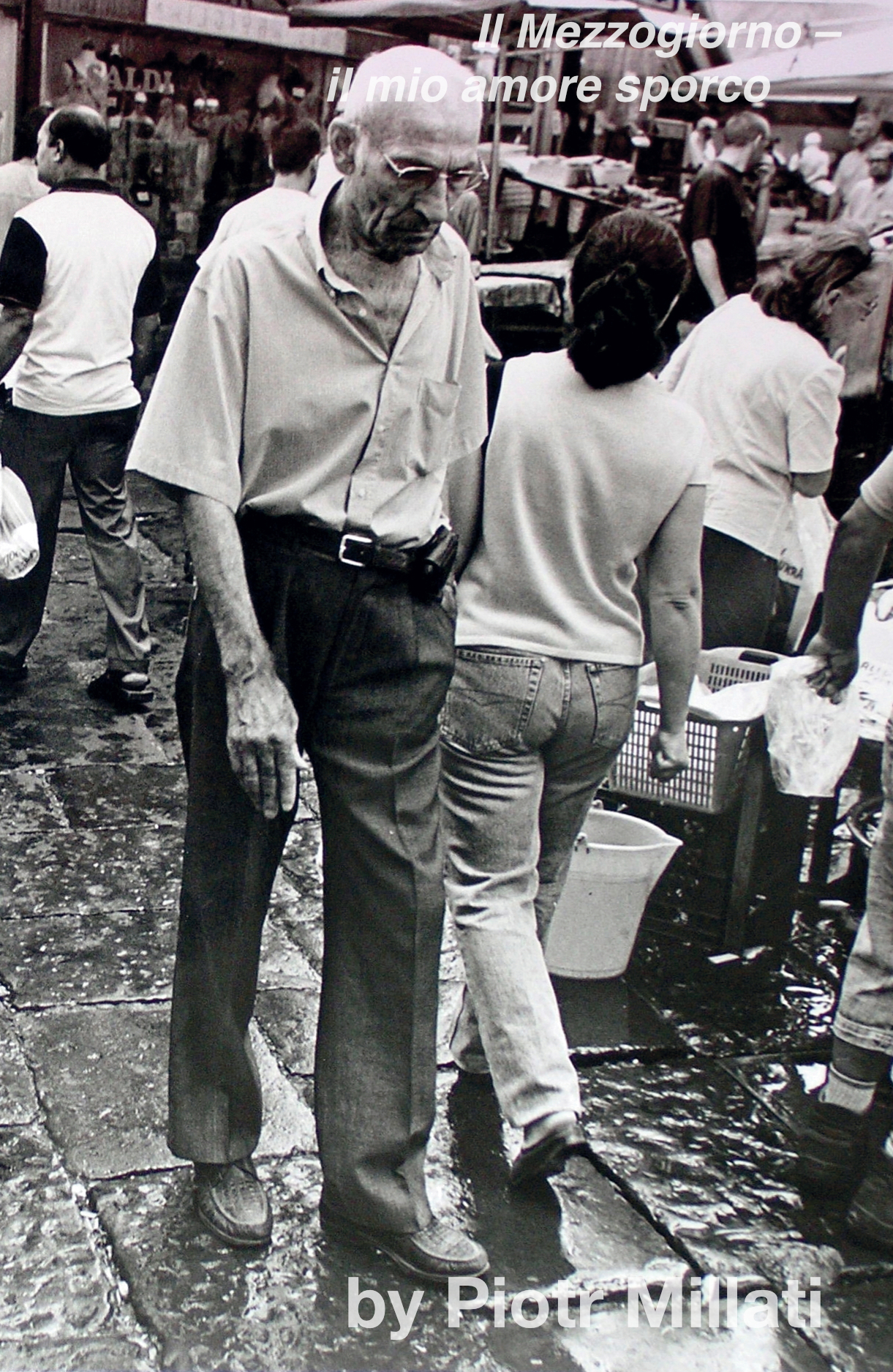
We have already shown the first part of Piotr Millati’s phenomenal photos here. But there is more. And we didn’t want to withhold them.


There is some disturbing ambiguity in the fascination with which we are drawn to images depicting decay, ruin, and destruction. All the more so when they concern human life, set in and marked by such scenery. A similar consternation is caused by the fact that one of the constantly recurring themes of photography or painting is humanity crippled by the destructive passage of time, affected by some shameful frailty or repulsive ugliness. The photographer’s lens seeks their opposite pole as much as beauty and beauty.
I found this kind of photographic beauty in southern Italy.
For northern Italians, three-million-year-old Naples is the epitome of provincialism and disdainful exoticism. The plebeian temperament of the Neapolitans, their irritating dialect, poorly understood by Italians themselves, the pervasive chaos and disorder that are an integral part of life here, the incurable poverty and crime, are something completely foreign to residents of even the perfectly Europeanized Milan.
In yet another way, the quintessential periphery is Palermo, from which it is closer in a straight line to Tunis than to Rome. It is here, almost in the very center, that you will find La Kalsa – a slum neighborhood bombed during World War II and still not rebuilt, devoid of sanitation, which was marked on city plans as a white spot without streets or buildings.
My photographs depict the people living there in their typical situations, in which both the dreariness and melancholy of their existence and its almost epic colorfulness are revealed.
Today we are proud to present an artist from Ethiopia.
At first glance, they are works in different styles. But that is the first glance. At second glance, we realize that Kaleab is communicating with us in a meta-position. He combines the traditional art of Ethiopia with modern language in a skillful and beautiful way. And at the same time he shows something that has become very rare in art. Or perhaps something that only becomes clear through art. It shows that culture is universal. That we humans have something in common. That is what distinguishes Kaleab’s art.
All pics ©by Kaleab Lemma
Enjoy
Kaleab Lemma, a 26- year-old artist originating from Addis Ababa, Ethiopia. Kaleab’s projects reflect his surroundings, serving as a means of profound self- expression. With the aspiration to capture the inherent beauty in his environment, Kaleab hopes to create art that goes beyond the visual, aiming to resonate with people on a deeper, emotional level.
In their artistic venture, the individual breathes life into canvas using the traditional Ethiopian dress (picture 3) known as ‘Habesha Kemis’. By blending the timeless beauty of the cultural attire with abstract techniques, they seek to immortalize and showcase the richness of Ethiopia. Amidst the encroachment of modern fashion, their art serves as an unspoken ambassador, inviting viewers to appreciate and celebrate the unique heritage of Ethiopia.
Passion is channeled into the creation of art that expresses profound emotions. Today, there is excitement as a uniquely crafted piece is shared, embodying the essence of their creativity, and allowing viewers to delve into the depths of their artistic fervor.
Currently engaged in various art projects, the individual’s ambition is to serve a broader audience, inspire through their artistic creations, and infuse a cultural touch. With the goal of enhancing the World beauty and grace, this aspire to promote Ethiopia in a distinctive way, showcasing art that has never been explored before.
Here you will find the e-mail address of Kaleab as well as a short description of his arts.
Z Januszem Majewskim, twórcą takich filmów jak Zaklęte rewiry (1975), Lekcja martwego języka (1979), czy C.K. Dezerterzy (1985), rozmawia marek gajdziński
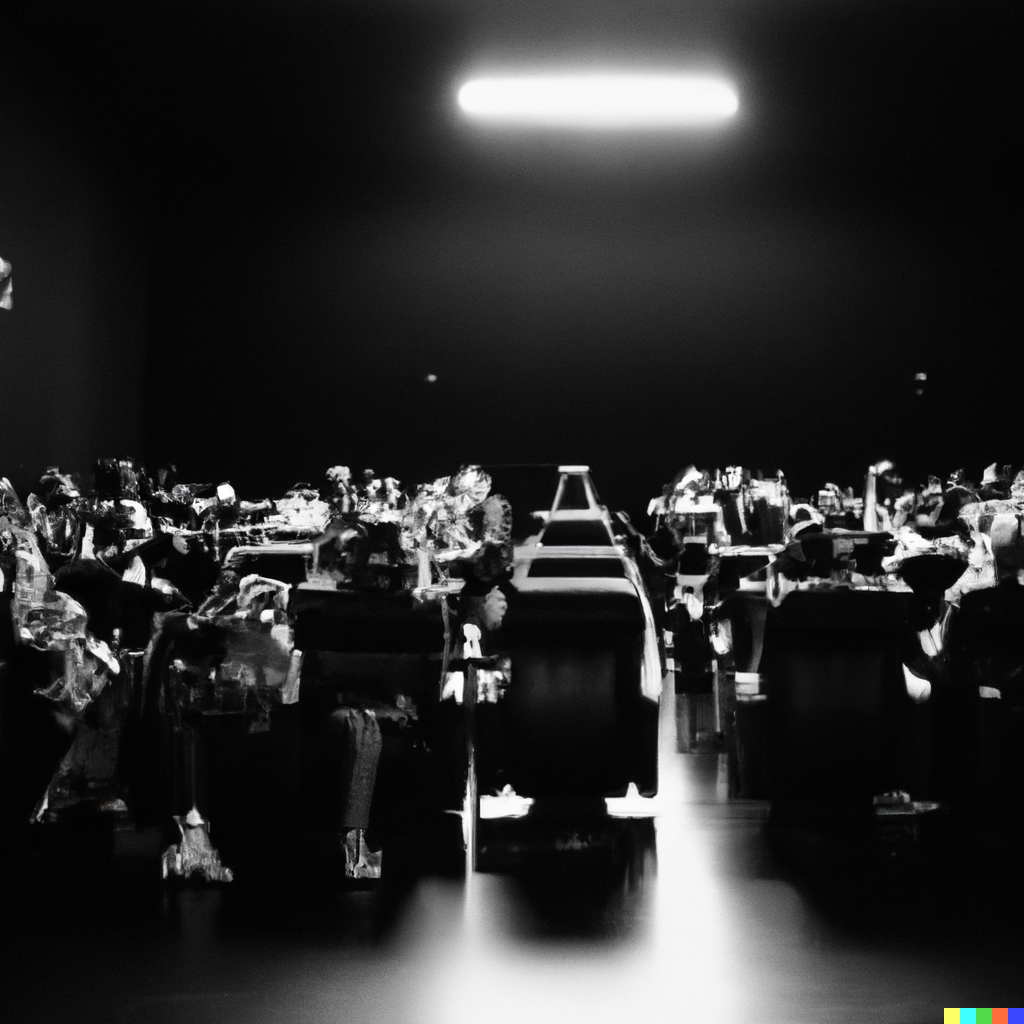
marek gajdziński: Wim Wenders podczas festiwalu w Cannes w 1982 roku zaprosił do swojego pokoju w Hotelu Martinez kilkunastu reżyserów, jednego po drugim, zaczynając od Jean-Luca Godarda, poprzez Wernera Herzoga, Susan Seidelman i Antonioniego, aż po Yilmaza Güneya, kurdyjskiego twórcę, który w tamtym roku zdobył Złotą Palmę za obraz Yol (Droga). Każdy z nich nagrał swoją wypowiedź na temat przyszłości kina. Czy kino i jego język umrą niebawem? – tak brzmiało pytanie wyjściowe. Wypowiedzi mają różną długość, od jednej minuty aż do pełnych jedenastu (każdy miał do dyspozycji 11 minutową rolkę taśmy). W ten sposób powstał film Pokój 666. Nie wystąpił w nim żaden polski twórca, choć mieliśmy wtedy Polaka w konkursie głównym. Cóż za przeoczenie. Chciałbym zatem powrócić myślą do tamtego zdarzenia i zadać Panu pytanie następujące: co by Pan powiedział, gdyby teraz przyszło Panu wziąć udział w podobnym przedsięwzięciu? Jak będzie wyglądała przyszłość naszego kina? Ta najbliższa i ta dalsza?
Janusz Majewski: Mnie się wydaje, że kino ma już bardzo krótką przyszłość. A to dlatego, że zmusza ludzi do tego, żeby przez minimum półtorej godziny siedzieli w jednym miejscu. Dzisiejszy widz, szczególnie młody, nie ma cierpliwości. Jego cierpliwość została wykształcona na zupełnie innych doświadczeniach, przede wszystkim na grach i na oglądaniu na własnym komputerze czy telewizorze filmów, które można w każdej chwili przerwać (jeśli nic się nie dzieje do 10 minuty), zacząć oglądać inny film, potem ewentualnie wrócić do poprzedniego. A kino przecież to niemal magiczny rytuał wymagający wspólnego siedzenia w ciemności, wspólnego przeżywania, kiedy sala cała się śmieje lub zamiera ze strachu (każdy przeżywa samodzielnie, lecz te emocje się sumują, wpływają na siebie nawzajem). Tego rytuału nie ma zatem kto podtrzymywać. Dlatego kino na naszych oczach umiera. Nie wiem tylko, jak długo ten stan przedśmiertny, a może już początek agonii będzie trwał. Aby zobrazować kondycję kina, opowiem o mojej dzisiejszej przygodzie, bo dziś właśnie próbowałem się wybrać na film z moim dorosłym już wnukiem (jest to taki nasz wspólny rytuał, że od czasu do czasu my obaj, tylko we dwóch, idziemy najpierw na lunch, a potem do kina). On właśnie wrócił z wakacji, siedliśmy więc do gazety, to znaczy do telefonu, i zaczęliśmy przeglądać repertuar. I co się okazało? W Warszawie, mieście w którym istnieje kilkadziesiąt kin, nie grają ani jednego filmu, na który warto by było zmarnować dwie godziny. Już same opisy tych filmów czy nawet tytuły skutecznie odstręczają, no bo co to może być za film, Człowiek mrówka czy jakiś Terminator numer siedem czy któryś tam? Zawsze podczas wakacji repertuar jest marny, rzecz zrozumiała, ale żeby do tego stopnia? To niestety jest część szerszego procesu, tego co dzieje się z naszą kulturą. Trudno, żeby z kinem było dobrze, jeśli nie jest dobrze z teatrem czy książkami.
marek gajdziński: Mówi Pan tu zatem o skąpości dobrego kina i braku wyboru jako ważnym czynnikom, które powodują upadek kina i szerzej, kultury.
Janusz Majewski: O braku wyboru, o obniżaniu lotów, dostosowywaniu się do poziomu, ja wiem, idiotów, żeby nie szukać łagodniejszych słów. Do poziomu odbiorcy, który dyktuje warunki.
marek gajdziński: Świat nie lubi pustki. Mówi Pan, że kino jest skazane na wymarcie. Co w takim razie wypełni puste miejsce po kinie?
Janusz Majewski: Rozwój techniki wciąż nas zaskakuje. Niebawem pewnie dzisiejszy obraz kinowy będzie dostępny dla każdego w warunkach domowych. Bez żadnych ograniczeń ani technicznych, ani repertuarowych. Zresztą już prawie jest.
marek gajdziński: Może więc nie oznacza to całkowitej zagłady kina, lecz jedynie formy, do której się przyzwyczailiśmy? Być może nasze dzieci i wnuki nawet tej zmiany nie zauważą? Bo przetrwa kino w sensie języka filmu?
Janusz Majewski: Ten język kształtował się przez dziesięciolecia, od kina niemego, które stworzyło język obrazu z konieczności, gdyż nie miało dźwięku do dyspozycji, z całą tą przesadną dla nas dziś czy wręcz śmieszną ekspresją. Przez sto lat z kawałkiem język kina przeszedł tę samą drogę, co języki literatury przez całe tysiąclecia, począwszy od Homera. W tym czasie wykształcił swoją własną ortografię i stylistykę, skodyfikował się i osiągnął perfekcję. Najważniejszym krokiem do osiągnięcia tej perfekcji było uświadomienie sobie przez takich twórców jak Eisenstein, Wiertow, czy Griffith, że głównym narzędziem języka filmu jest montaż. Dzięki temu dziś językiem filmu możemy wyrazić niemal wszystko. Kino może zniknąć, ale film przetrwa i język filmu przetrwa, tak jak trwają języki ludzi. Każdy język się doskonali, wzbogaca, absorbuje nowe słowa, zapożycza z innych języków, więc język filmu też się będzie doskonalił, ale jego gramatyka, jego składnia pozostaną w istocie bez zmian.
marek gajdziński: Byłem kiedyś na wykładzie Petera Greenawaya w Sopocie, w którym ten brytyjski reżyser określający się jako ekscentryk kina tłumaczył, iż film musi się uwolnić od kilku rodzajów tyranii, wśród których wymienił dyktaturę prostokątnego kadru, tekstu, aktora, oraz kamery. Mówił wtedy też o tym samym, o czym Pan już wspomniał, o przykuciu widza do fotela. Dla Pana jest to naczelna wartość kina, bo brak ruchu i ciemność pozwalają skupić się na filmie. Greenaway odwrotnie, uważa że to minus. Na przykładzie swojego projektu Peopling the Palacespokazywał, że kino przyszłości będzie musiało dostosować się do widza, jeśli chce przetrwać. Oznacza to, między innymi, że film musi podążać za swoimi widzami wszędzie tam, gdzie oni chcieliby się udać. Człowiek przyszłości będzie zatem mógł oglądać filmy wykonując różne czynności, biegnąc, spacerując, a jak to będzie wyglądało w praktyce, to już zależy od rozwoju techniki, która być może zaoferuje możliwość obrazu rzucanego na wszelkie będące pod ręką płaszczyzny albo po prostu zawieszonego w powietrzu, zawsze w określonej odległości od oczu widza. Co Pan o tym myśli?
Janusz Majewski: To ciekawy pomysł, ale nie dla mnie. Nie uśmiechałoby mi się prowadzić samochód albo tylko chodzić po lesie i jednocześnie oglądać film. To też kwestia podzielności uwagi. Przecież w kinie ważny jest nie tylko obraz, lecz również, a może przede wszystkim refleksja, jaką ten obraz we mnie wzbudza. Wie Pan, ja kilka dni temu zacząłem 85 rok życia, i coraz częściej myślę z ulgą o tym, że to już mnie nie dotyczy, nie będę tego przeżywał i nie będzie mnie to denerwowało. To jest pozytywna i pocieszająca strona starości. Nie jest źle być starym, pod warunkiem że ciekawość świata coraz bardziej przejawia się w ciekawości siebie samego jako przedstawiciela gatunku, jako exemplum do studiowania tego tworu natury, jakim jest człowiek. Nie mówię tu o jakimś chorobliwym egoizmie czy egocentryzmie, lecz uważnym obserwowaniu własnego wnętrza, po to, aby poznać wnętrza innych ludzi. Świat ma wiele obliczy, można się interesować polityką, ale z perspektywy mojego wielu to wydaje się nudne i niewłaściwe. Lepiej zamknąć oczy na te objawy aberracji umysłowej, otworzyć się za to na piękne strony świata. Najwspanialszym obiektem obserwacji dla człowieka jest niezmiennie on sam. Tak że mnie ten człowiek przyszłości i jego zwyczaje, jego być może nadludzka zdolność do dzielenia uwagi, coraz mniej interesują.
marek gajdziński: Refleksja, jej waga w życiu człowieka, współczesnego, przeszłego czy przyszłego, doceniana przez nas zwykle z wiekiem, prowadzi do kolejnego pytania, pytania o Lekcję martwego języka, film według powieści Kuśniewicza w Pana reżyserii i według Pańskiego scenariusza. Bo to bardzo refleksyjny film. Nasz kolega redakcyjny, Paweł Huelle, uważa Lekcję za arcydzieło sztuki filmowej. Czy Pan też ma do tego filmu jakiś szczególny stosunek?
Janusz Majewski: Cieszy mnie ta opinia, bo ja również ten film bardzo lubię. Włożyłem w niego dużo serca i emocji. Staranności. Myślę, że ten film się rzeczywiście udał. Ta powieść Kuśniewicza mnie szczególnie zafascynowała, choć lubiłem też jego poprzednie książki. Nawiasem mówiąc, Kuśniewicz dawał mi nadzieję, że nigdy nie jest za późno. Bo on bardzo późno zadebiutował, miał chyba 56 lat, kiedy wydał pierwszą powieść. Przeczytałem ją i następne, no i kiedy zobaczyłem nową w księgarni (w Zakopanem, gdzie byłem na nartach), od razu kupiłem i przeczytałem jeszcze tego samego wieczoru i kawałka nocy. Nie mogłem się doczekać poranka, żeby zadzwonić do niego i do Zespołu Filmowego, żeby kupili od autora opcję na tę historię. Żeby mnie ktoś nie ubiegł. Potem zresztą pytałem w Zespole, czy ktoś się tym interesował, okazało się, że byłem jedyny.
marek gajdziński: Może dlatego, że Lekcję martwego języka może wydawać się powieścią bardzo nie filmową. Narracja, w której bezustanne wspominanie przeszłości, jak u Prousta, i elementy strumienia świadomości, jak u Virginii Woolf, grają ważną rolę. Czy Pamięta Pan, co zdecydowało, że postanowił Pan wziąć się za ten właśnie tekst? Jak Pan podszedł do tego zadania?
Janusz Majewski: Pamiętam, że od razu zobaczyłem w głowie gotowy film. Nie miałem żadnych wątpliwości, jak to należy opowiedzieć. Widocznie moi koledzy nie zobaczyli tego. Ale ja mam hyzia na punkcie czytania książek, od wczesnego dzieciństwa bez książki nie ma dla mnie ani jednego wieczoru. Nie zasnę bez książki. Język literacki był mi zawsze bardzo bliski, i być może dzięki temu tak szybko zorientowałem się, że to jest również świetny materiał na film. Oczywiście wymagał przełożenia z języka na język, ale nie miałem z tym żadnego kłopotu.
marek gajdziński: Tak, adaptacja to rodzaj przekładu, o przekładach zaś mówi się, że są jak żony, albo wierne, albo piękne.
Janusz Majewski: Myślę, że ja Kuśniewicza nie zdradziłem, że to wciąż była jego powieść, tyle, że na ekran przeniesiona. Zresztą on sam, a przecież znał się na filmie, był pod wrażeniem adaptacji.
marek gajdziński: Udało się osiągnąć piękno bez zdrady?
Janusz Majewski: Tak. Choć nie było to proste, bo trzeba było po drodze pokonać wiele przeszkód. Nie tylko podczas kręcenia, lecz także na etapie postprodukcji. Film został zakwestionowany przez władze. Po kolaudacji, na której film otrzymał zresztą wysokie oceny, został pokazany Jaroszewiczowi i jego małżonce. I oni dostali szału, twierdząc że za pieniądze ludu pracującego przemyca się do obiegu film elitarny i dekadencki zarazem, to po pierwsze, a po drugie, przecież to się dzieje na terenach należących do Ukraińskiej Socjalistycznej Republiki Radzieckiej, i co ja powiem, pyta Jaroszewicz, jak jakiś towarzysz do mnie zadzwoni z pretensjami, że jakim prawem robimy filmy o ich ziemiach. Trzeba więc było sporo powycinać, choćby ten okrzyk “Wojna skończona! Niech żyje wolna Ukraina!”, wydany przez miejscowego buntownika, który w powieści pojawia się podczas finałowej śmierci porucznika Kiekeritza. Wolna Ukraina okazała się nie do przyjęcia. Niech pan sobie wyobrazi, że ten film jest wyświetlany w Koszalinie, powiedział do mnie minister od kultury, gdzie są przesiedleni z Bieszczad Ukraińcy, i oni usłyszą to w kinie i zrobią manifestację. No i pozostało samo “Wojna skończona!”, bez Ukrainy. A kiedy przywieźliśmy film na festiwal do Gdańska, latem 1980 roku, zbiegło się to z wydarzeniami Solidarnościowymi i nikt do takiego filmu nie miał głowy. W cenie wtedy były filmy współczesne, z politycznymi aluzjami. Nie trafiliśmy na odpowiedni czas. Satysfakcja przyszła po latach, a film, na szczęście, się w tym czasie nie zestarzał.
marek gajdziński: Który ze swoich ruchomych obrazów uważa Pan za swoje największe artystyczne bądź osobiste osiągnięcie? Albo za dzieło o najbardziej ponadczasowym charakterze? I co to w ogóle znaczy, ponadczasowy charakter w kinie, czy to film, który nie jest osadzony w żadnej konkretnej rzeczywistości, czy przeciwnie, ponadczasowość uzyskuje się poprzez rzetelne odniesienia do wybranego czasu i przestrzeni, poprzez sporządzenie wielowymiarowego portretu jakiegoś wybranego fragmentu istnienia?
Janusz Majewski: Generalnie Zaklęte rewiry uważa się za moje opus magnum. Głównie dlatego, że jest to z jednej strony film zrobiony perfekcyjnie, że tak nieskromnie się wyrażę, perfekcyjnie od strony warsztatowej, z drugiej zaś jest to historia, która ma walor społeczny i uniwersalny, wciąż aktualny charakter. Bo każdy człowiek musi w młodości przejść przez taką czy inną szkołę życia. Jeździłem z tym filmem po świecie, byłem między innymi w Nowym Jorku, zaproszony na pokaz w klubie filmowym w Muzeum Sztuki Nowoczesnej (MOMA), i po filmie wywiązała się dyskusja. Okazało się, że wielu widzów uważa, że ten film jest o nich. Jakaś dziewczyna powiedziała – ja nie jestem kelnerką, ale to jest film o mnie, bo też mam takie stosunki w pracy. Ktoś inny wstał i powiedział – a ja jestem kelnerem i u nas w pracy jest wciąż dokładnie tak samo. A potem jakiś architekt i jeszcze ktoś się odezwał i okazało się, że film ma ogromny rezonans. Amerykanie chcieli nawet zrobić remake i mnie to zaproponowali, żebym tę samą historię opowiedział w warunkach amerykańskich. No ale wtedy Henryk Worcell już niestety nie żył, a pani Worcellowa była chyba pod wpływem jakichś idiotów, i nie zgodziła się sprzedać praw. Nie rozumiała, jak świetny byłby to interes, dla niej i dla całej rodziny, bo przecież zarobiłaby majątek i długo wszyscy mogliby z tego żyć, na pewno wydano by też powieść w nakładach, które w Ameryce idą w miliony. Tłumaczyłem jej to, ale zaparła się i nic z tego w sumie nie wyszło. To była bardzo prosta kobieta, o czym może doskonale świadczyć następujące zdarzenie. Kiedy robiłem ten film, to zaprosiłem oboje Worcellów do Pragi, bo tam trwały zdjęcia. Ona była pierwszy raz na planie filmowym, śledziła wszystko z zapartym tchem, i w pewnym momencie, patrząc na Marka Kondrata z wyraźnym zachwytem, powiedziała do męża: Oj, Henryczku, jaki ty byłeś kiedyś piękny. To zdanie mnie z kolei wprawiło w autentyczny zachwyt. Bo ona naprawdę, w tej swojej prostocie, uwierzyła że Kondrat to jest jej Henryk z czasów młodości (powieść Zaklęte rewiry jest narracją w dużej mierze autobiograficzną). Na naszych oczach dokonał się jakiś cud: Marek grając postać stworzoną przez jej męża, przeistoczył się w niego samego z przeszłości!
marek gajdziński: To się nazywa magia kina!
Janusz Majewski: Rozumiałbym tę magię, gdyby to było podczas projekcji, w sali kinowej. Ale nie, to było podczas zdjęć, a nawet w przerwie między zdjęciami. Siedzieliśmy obaj z Markiem na krzesełkach, oni podeszli i wtedy ona to powiedziała. No i kiedy pojawiła się ta propozycja remaku, ona jako spadkobierczyni praw miała decydujący głos. Odmówiła. Może byłoby inaczej, gdyby się mogła syna poradzić. Ale nie mogła. Bo on był znanym himalaistą (Kurtyka, tak naprawdę się nazywali) i wspinał się gdzieś w Himalajach, telefonów komórkowych wtedy nie było, a Amerykanie, jak to Amerykanie, chcieli mieć odpowiedź natychmiast, w ciągu tygodnia, dwóch. A jak syn wrócił z Azji, to już było za późno.
marek gajdziński: Nie wiem, czy żałować. Tej straconej szansy. Bo do remaków mam, generalnie, stosunek ambiwalentny. A w tej konkretnej sytuacji z jednej strony ominęła Pana Hollywoodzka, być może wspaniała przygoda. Z drugiej jednak strony, byłoby to pewnie ogromne i stresujące wyzwanie, bo czy po stworzeniu filmu tak perfekcyjnego udałoby się Panu zrobić jeszcze lepszy? Tego się już pewnie nigdy nie dowiemy. Podobnie jak przyszłość, również alternatywne wersje przeszłości są przed nami zakryte. Bardzo Panu dziękuję za tę rozmowę.
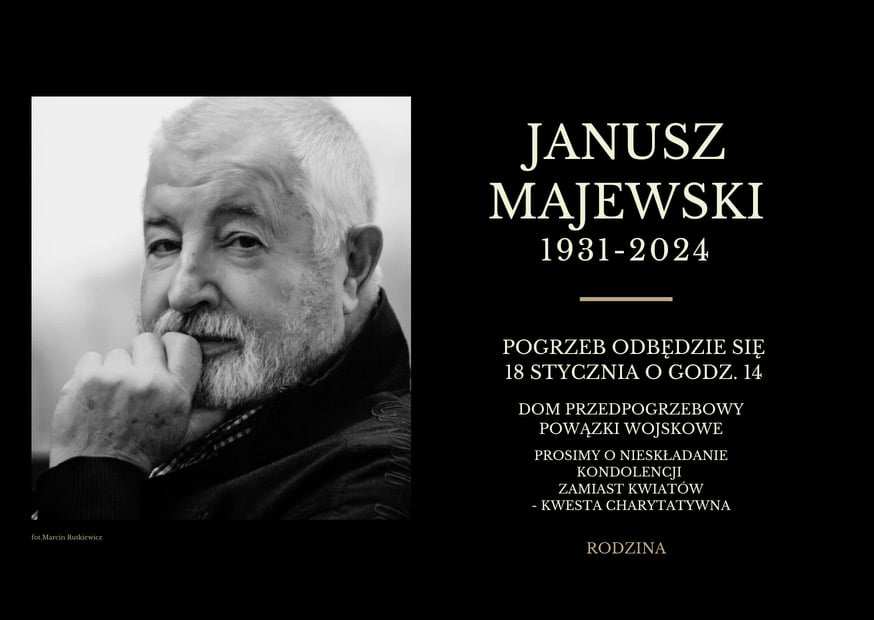
(Tekst rozmowy, autoryzowany przez Janusza Majewskiego, ukazał się wcześniej w Kwartalniku Artystycznym BLIZA numer 3 (24), 2015)
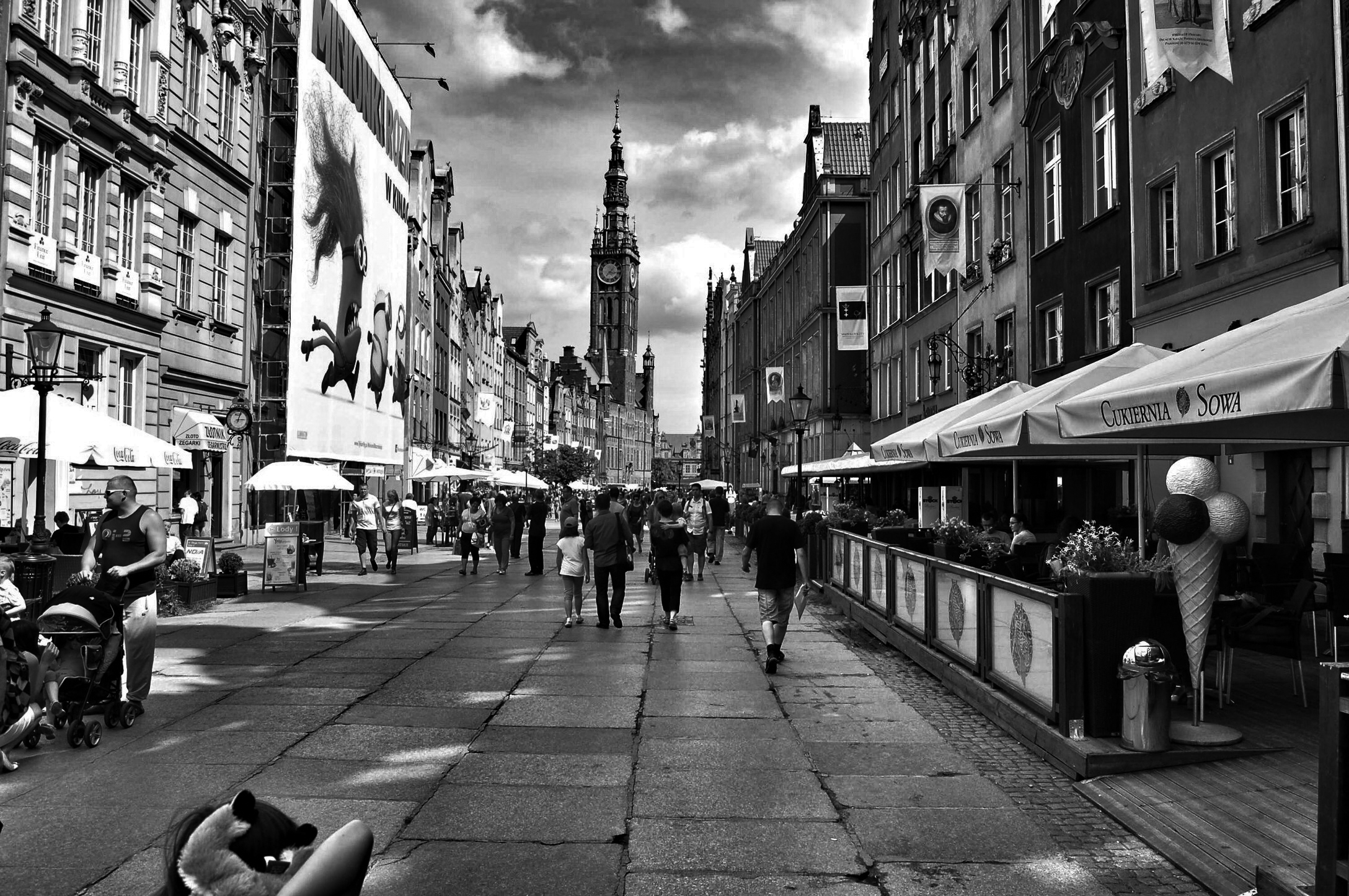
Sloterdijk argues that the architecture we encounter in our daily lives has a significant impact on us. At first glance, this may seem trivial, but it’s not just about a sense of comfort or well-being. It’s not only the buildings that influence us but also the cities we inhabit. Sloterdijk’s theory suggests that certain architectural designs have the power to shape our thoughts and emotions. I find this concept intriguing because buildings are constructed with a specific purpose or intention in mind.
Cities can serve a purpose beyond being just a place of residence. However, cities have an intricate way of influencing us, as they are shaped by their history, inhabitants, and climate. It can be challenging to capture the climate, especially for artists and writers. Being physically present in the city can help one feel and sense it better. In our case, we are dealing with three cities that form a single agglomeration, each with its unique history, atmosphere, and ideas. The city is not uniform but is instead made up of various stories.
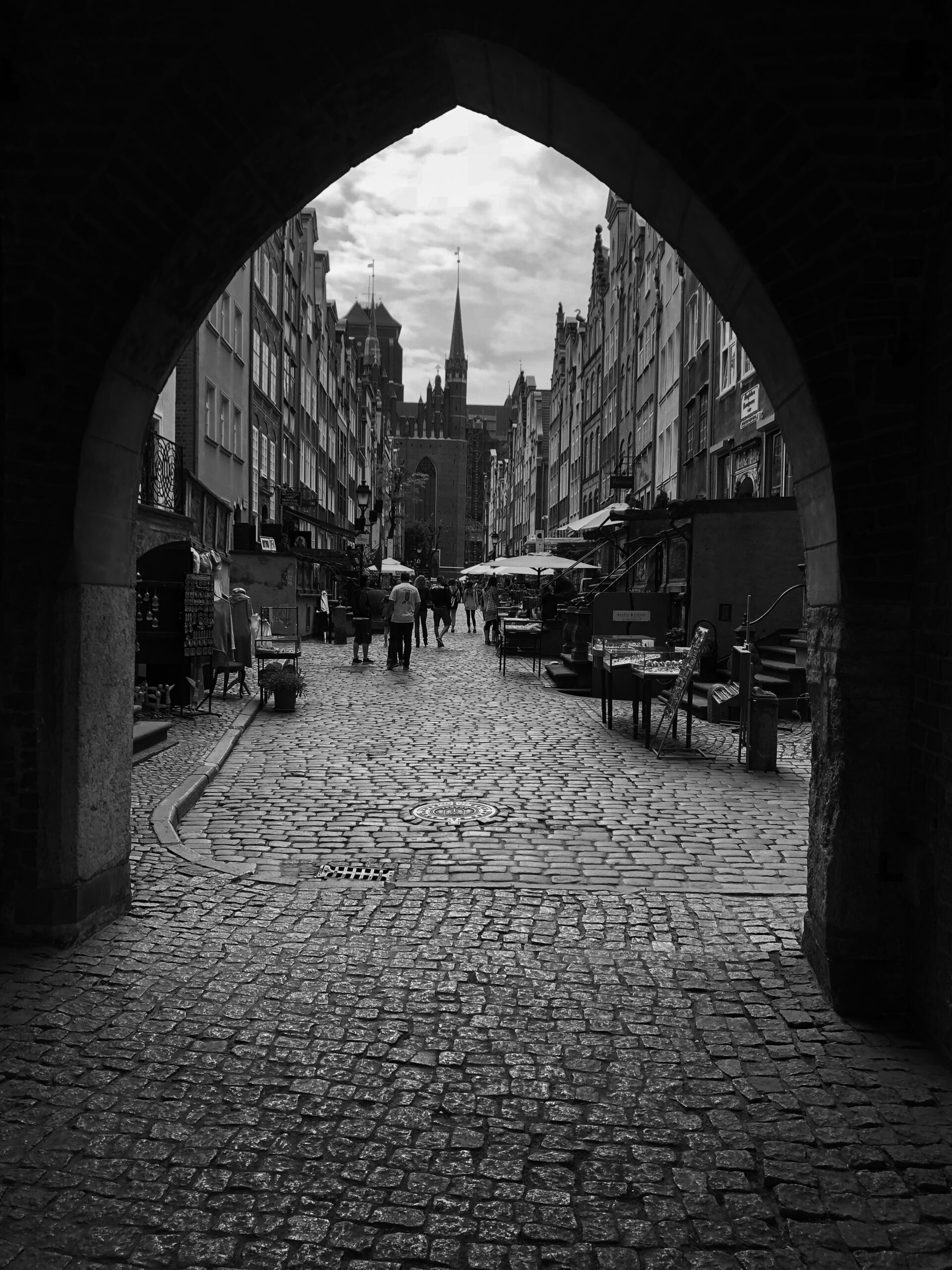
Paweł Huelle was not just a writer who resided and created in Gdansk; he was able to capture and reproduce the spirit of the city in his work. The impact that a city or its buildings can have on people is unique, and some certain buildings and places hold great cultural significance and influence over individuals, even if they are not listed as UNESCO World Heritage Sites. Paweł Huelle’s literary works focused on Tricity, and even though he passed away on 27.11.2023, his books and the spirit he captured remain available to us. His passing is indeed a great loss, and we mourn his absence.
Pics ©by Mariusz Olszewski
Metaphysics describes what is behind physics. A term that has arisen rather accidentally. A term that can also describe our humanity. Postmodernism has reconstructed metaphysics. But at the same time, it does not want to abolish metaphysics. On the contrary, postmodernism has strengthened metaphysical reflections and discourses.
Mariusz Olszewski shows objects in his photographs. And the metaphysics behind the objects. A method reminiscent of Husserl, but even more so in a poetic way of Graham Harman. Perhaps not of the quadruple object. But of the object itself.
We are pleased to show an excerpt from his Metafizyczna Portfolio by Mariusz Olszewski here. We have already shown some of the works here, here, and here.
Mariusz Olszewski, born in 1961, a graduate of the Adam Mickiewicz University in Poznan, now lives in Lodz. For years associated with Galeria Wschodnia in Lodz. Artist, exhibitions in Poland, Europe, and New York. Collaboration on documentary films on the subject of art. Works include concrete poetry, installation, and photography.
Through metaphysics, we usually understand ideas, theories, and thoughts. Minwen Li shows in her photos that metaphysics is also something tangible. She reduces the term to its original meaning. And shows us the world behind reality. Or next to it. Or reality itself. At the same time, she captures with her camera another aspect that is no less interesting. She shows us that metaphysics, nature, is also mystical. That mysticism lies in the contemplation of nature. Something of which Levy – Bruhl wrote only briefly. Something essential, in my opinion.
We are glad to show you herewith Minwen’s photos. Photos that show a whole world in the simple form of a flower.
The Photos
Haze
The launch of this project began on an ordinary cloudy day in 2021. In addition to taking digital photos, I usually take Polaroid photos. When I was about to go out that day, I found that the flowers in my vase which seemed to be faded reflected on a piece of unused Polaroid photo paper. At that moment, I suddenly felt that the distorted and blurred flowers were so beautiful, and then I took a few photos of the flowers on the Polaroid paper. I simply edited these images and I have the first initial photos of this project. Originally I thought it was just a normal exercise, but after being seen and encouraged by people on social media, I decided to do a series of photos in the same way, and insisted on only shooting the flowers the night before they fade.
The Photographer
Minwen Li
Born in Shaanxi, China in 1997, I started my journey as a student in France in 2017, and later obtained a bachelor degree in information and communication and a master degree in management of cultural institutions.
Although I have never been educated in photography systematically, I have been insisted on catching and recording the details of my emotions as she interacts with myself and the outside world with her small Olympus camera offered by my father in 2019, following my private feelings about beauty.
My main passion focuses on documentary photography, fashion photography, experimental photography and street photography as well. At the moment, I’m working on my personal artistic creation and commercial photography at the same time.
Taking photos with warmth and emotions is my original intention to engage in photography.
Text & artwork by Natasza Rogozinska

Natasza Rogozinska is a trained fashion designer, but she rather focuses on illustration and graphic design. Her works have been showcased in Vogue Poland, i-D Magazine, Kaltblut Magazine, Waste Not exhibition at the IFS Somerset House, London, and others. Natasza is now working on a master project, reviving stories about forgotten women from general history, myths, and legends. She combines traditional and analog techniques such as embroidery and linocut with digital art – to create a feminine chronicle of these forgotten stories.
We have already published one of her articles here. Today we proudly present her text and graphics.
If you would like to read more of her stories and watch more of her work, you can find them (external link) here.
When you hear about a brave French woman named Jeanne, first character that comes to mind is obviously Jeanne d’Arc. However, she was not the only battle-hardened Jeanne to tread the French lands. In the year 1300 Jeanne de Belleville – who, a mere 40 years later, would abandon noble manor and luxury – ws born into a wealthy family. Why did she forsake the aristocratic path, you may ask? The answer can be encapsulated in just one word: revenge.
Jeanne de Belleville was born as the daughter of French aristocrats, wealthy and highly respected. Her father, however, dies quickly – and Jeanne inherits the dominion over lands in Belleville and Montaigu as a result of this tragedy. As a 12-year-old (and this was apparently a suspicious age anyway, even for the Middle Ages) she enters into her first marriage with 19-year- old Geoffrey de Châteaubriant VIII, to whom she bears two children. In 1326, Geoffrey kicks the bucket and Jeanne prepares to marry Guy de Penthièvre – the marriage is, however, questioned by a certain (quarrelsome by nature) French family called the de Blois. Their exaggerated lament causes Pope John XXII to annul the scandalous marriage for political reasons, obviously. Guy then marries Marie de Blois – and dies shortly thereafter. Coincidence? Might be.
Meanwhile, Jeanne marries (without papal interference) Olivier IV de Clisson, a mighty Breton, who owned a castle in Clisson, an estate in Nantes and lands in Blain. Adding Jeanne’s lands to it suddenly it appears that the Clissons are becoming a true feudal power in Brittany. Olivier and Jeanne are well-respected and has a good reputation among Breton society. The de Clisson family quickly expands and now consists of not only Jeanne and Olivier, but also of their five children – Isabeau, Maurice, Olivier, Guillame and Jeanne. What the de Clisson family does not know yet is that they are on the eve of a succession war in Brittany – this will change their fate forever.
To understand the intricacies of this (one of many, as we all know) French-English argument, it should be mentioned that in the 14th century Brittany was a province ruled by a duke. The Bretons had a strong sense of Breton identity – even though their loyalties were divided between two kings – Philip VI of France and Edward III of England, the Bretons were always loyal to the duke above all. One can only imagine the cliffhanger that ensued when the Duke of Brittany, Jean III le Bon, dies childless in 1341. The war for the Breton succession is set in motion, with each side fielding its own player – in the blue corner you can see John de Montfort, backed by Edward III of England and in the red corner you can see Charles de Blois, sympathetic to Philip VI of France.

It was therefore necessary to take sides, to bet a few pennies on someone. Olivier de Clisson decides to support his childhood friend, Charles de Blois – who, after all, comes from the very same family of whistleblowers that denounced Jeanne and Guy de Penthièvre before the Pope. In 1343, Olivier and Hervé VII de Léon, as military commanders, defend the city of Vannes against attacks by the English – who eventually succeed after four attempts to force the city. Olivier and Hervé are taken into captivity, from which only Oliver emerges – exchanged for the English Ralph de Stafford and a suspiciously small sum of money. And that is when Charles de Blois stabs his childhood friend in the back – suggesting that Olivier surrendered Vannes to the English without a fight, what is more, since they exchanged him for such a small amount of money, he must have sold himself to the English. Treason!
In 1343, after the truce between England and France was officially signed, Olivier and fifteen other Breton and Norman noblemen are invited to a tournament to celebrate. However, there is no celebration foreseen for Olivier IV de Clisson – he is captured by his compatriots and taken to Paris – on charges of unthinkable treason. Jeanne, trying to save her husband, resorts to bribery – as a result of which the royal sergeant tries to delay Olivier’s trial. The truth comes out eventually and he gets arrested – as is Jeanne, who is not only accused of attempted bribery, but also of treason and disobedience. Finally, she runs away with the help of her eldest son, Olivier, as well as her squire and butler.
Meanwhile, on August 2nd, 1343, Olivier IV de Clisson finally stands trial – and is accused of conspiring and forming alliances with Edward III, an enemy of the French king and all of France. He is beheaded, and his head is taken to Nantes, where, impaled on a lance, it becomes a warning to others. This shocks the noblemen, because evidence of Olivier’s guilt is lacking, and moreover, desecrating the corpse and displaying it in public as a warning was the domain of the lowest class of slaughterers and criminals – not aristocrats.

Filled with fury and rage, Jeanne takes her two younger sons, Olivier and Guillame and heads to Nantes to show them their father’s head impaled on a lance and set on the city gates. She swears revenge to Charles de Blois and king Philip VI of France. She sells rest of the valuables, gather s400 loyal men and begins her crusade against France. She attacks the castle of Touffou, which was under the command of Galois de la Heuse, an officer of Charles de Blois. He allegedly recognized Jeanne and lets her in – after that her forces massacred the entire garrison, leaving only one wretch alive.
Soon after, with the help of the English king and Breton sympathizers, Jeanne organizes three warships, which are repainted black, their sails dyed blood red – and the flagship is christened with the name “My Vengeance.” Jeanne disguises herself as a pirate and goes to the sea with her Black Fleet. For the next 13 years, she hangs around the English Channel, spotting French merchant ships and attacking them without ruthlessness – always leaving one (un)lucky man alive to report to the French king that the Lioness of Brittany has caught up with them. And it was a tactic that can be described as guerrilla warfare at sea – disrupting the enemy’s logistics by attacking merchant ships, never military vessels.
In the end, however, the French manage to track down Jeanne and sink her flagship, so she drifts along with her sons for 5 days in troubled waters – as a result of this tragedy one of them, Guillame, dies. Jeanne and Olivier are eventually rescued by Jeanne’s allies, the de Montforts – and the Lioness of Brittany continues her pirate expeditions. In 1350, Jeanne marries for the last time – to Walter Bentley, closely related to King Edward III. They settled at Hennebont Castle and lived in relative peace for the next couple of years (not counting Walter’s little squabble with King Edward III over Jeanne’s estates). In December 1359 Walter dies, and a few weeks after him Jeanne – leaving behind a clear message: do not make baseless accusations of treason and do not desecrate the corpse – or the Black Fleet will catch up with you. Got it?

©by Marek Gajdziński
Przeczytałem to na głos, tytułem wstępu. Bo wizja wydała mi się aktualna i w czasie, i w kontekście zamierzonego tematu rozmowy, znikania. Znikania w teatrze, a szczególnie w ostatnim spektaklu Adama Ziajskiego, mojego rozmówcy, zatytułowanym Chciałbym nie być (2019). I dalej wyjaśniłem, że ta wizja przyszłości teatru, przytoczona tu z kilkoma drobnymi pominięciami, została stworzona przez Edwarda Balcerzana w jego lekko kpiarskim manifeście artystycznym. Jakiś czas po popaździernikowej odwilży, w latach 1960. Niedokładna, bo manifest zaginął, autor przytacza tekst po latach, z pamięci, we wspomnieniach dotyczących kultowego i ważnego dla historii teatru poznańskiego klubu studenckiego “Od nowa”. Ciężki tom z tymi wspomnieniami, zatytułowany Klub Od nowa, 1958-1970, leżał przed nami na stole. Obok mój telefon, z włączoną funkcją dyktafonu.
– Jak myślisz, ile jest prawdy w tym manifeście? Czy stwierdzenie, że rozwój teatru to proces, który dąży od bogactwa środków wyrazu do ascezy, od bycia do niebycia, ma sens? – pytałem. – I czy w teatrze tylko znika? A co z tym, co się pojawia? Jak w teatrze to z trudem wypracowane niebycie przechodzi w bycie? Czy to coś zmienia w wizji nakreślonej przez Balcerzana? A może ją tylko uzupełnia?
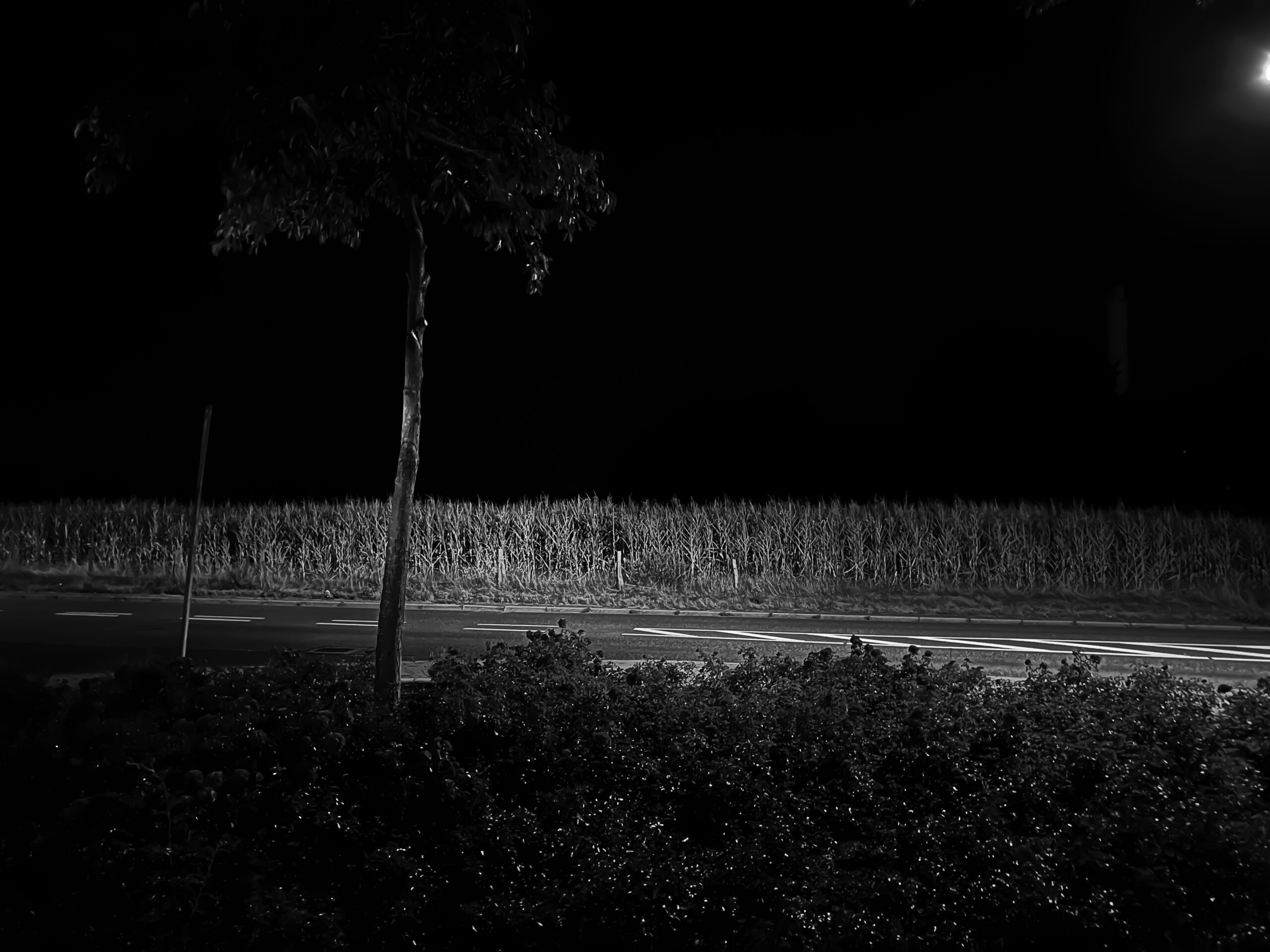
Dekoracje teatrowi są niepotrzebne. Przeciwnie, mogą szkodzić.
Zaczął od tego, że znikanie to pojęcie szerokie, że można je zatem odnieść do teatru wielorako. Po pierwsze tak, jak zapewne rozumiał to Balcerzan:
– Teatr to sztuka rezygnacji ze zbędnych elementów. Mniej znaczy więcej. Prostota, czystość, redukcja, bezpośredniość, ascetyczność i syntetyczność to sprawy absolutnie kluczowe. Uczyłem się tego przez 20 lat pracy na ulicy, w ulicznym przedstawieniu nie ma miejsca na niuanse i odcienie. Przekaz musiał być jasny, mocny i prosty.
Przypomniałem sobie jak kiedyś, po jakimś spektaklu, Adam oprowadzał mnie i kilka innych osób po Scenie Roboczej w jej nowej siedzibie, w budynku dawnego kina Olimpia przy Grunwaldzkiej 22. To było chyba krótko po przeprowadzce z poprzedniego miejsca rezydencji, w wielu pomieszczeniach trwał remont. Wspomniał wtedy, że możliwości inscenizacyjne być może są i będą ograniczone, ale że to nie szkodzi, bo dekoracje teatrowi nie są potrzebne. Przeciwnie, mogą szkodzić.
– Ale sądzę – mówił dalej Adam – że Balcerzan idzie dalej w tej swojej wizji, mówi nie tylko o ascezie, ale też o roli wyobraźni, o tym, że teatr rodzi się w głowie widza i tam pozostawia swój najważniejszy ślad. Ślad refleksji, do jakiej może skłaniać choćby to wyobrażenie żyletki na pniu. Teatr to wielopoziomową grą obrazów, znaczeń, skojarzeń i oczywiście naszych emocji. Jednak dobry teatr to nie ten, który się stroi, lecz przeciwnie, ten, który obnaża. W tym sensie tak, zgadzam się, zmierzamy w tym kierunku, który Balcerzan nakreślił. Nasz świat cierpi na bolesne przebodźcowanie, przedramatyzowanie. Zalewają nas nieistotne informacje. Szlachetna sztuka rezygnacji jest jedynym ratunkiem i być może najważniejszym artystycznym gestem. Dobrze rozumiał to Grotowski w latach 1960. Mówił, że teatr musi być ubogi, bo nie może ścigać się z telewizją i filmem o różnorodność wizualnych atrakcji. Na scenie powinno być tylko to, co jest sednem i co kieruje uwagę na sedno, dotyka istoty. Poza tym, teatr ze swej natury jest doświadczeniem „tu i teraz”. Teatr znikanie ma wpisane w swój genotyp i za to go kochamy.

W pewnym momencie w restauracji u Pana Gara, w Domu Tramwajarza na poznańskich Jeżycach, gdzie zaczęliśmy naszą rozmowę, zrobiło się głośno, bo grupa kobiet ćwiczyła w kręgu śpiewanie japońskich pieśni. Musieliśmy poszukać bardziej ustronnego miejsca.
Po drodze rozmawialiśmy chwilę o tym i owym, przy okazji dochodząc do tego, jak znika dźwięk w filmach. A konkretnie, dlaczego słowa w filmach polskich znikają. Najpierw zapytałem Adama o to, jak układał komentarze do spektaklu Chciałbym nie być i jak powstała historia o kobiecie, która przez chwilę, sto sekund miało to być w zamyśle, przeżywa piekło, huragan myśli i emocji spowodowanych tym, że straciła z oczu swoje dziecko w sklepie: “Chcesz biec i nie możesz biec. Chcesz krzyczeć i nie możesz krzyczeć. Rozpadasz się. W uszach pisk, jakbyś wycierała coś od środka. W głowie kasuje ci się obraz. W brzuchu wywracają trzewia”.[1] Wyjaśnił, że to jedyna w tym przedstawieniu opowieść, która nie była w pełni autentyczna. To znaczy została przez niego napisana na podstawie kilku wysłuchanych historii. Mówił o tym, jak pisząc dba o precyzję słowa i jak lubi bawić się szeleszczeniem naszej mowy. I tu niespodziewanie przeszliśmy do kina. Bo okazuje się, że to szeleszczenie powoduje, iż dialogi w polskich filmach tak trudne bywają do zrozumienia. Bo nasz szelest jest kłopotliwy dla mikrofonu i bardzo łatwo zlewa się z dźwiękami tła, na przykład odgłosami ulicy, hałasem przejeżdżającego tramwaju, szumem wiatru.
[1] Ten i wszystkie kolejne cytaty, jeżeli nie zaznaczono inaczej, pochodzą ze spektaklu Chciałbym nie być Teatru Nowego w Poznaniu.
Współczesny teatr coraz częściej robi to co niegdyś robiły gazety
Weszliśmy na piętro, ale tam, w Sali Balowej, trwała jakaś próba teatralna albo taneczna. A po korytarzu przed salą biegały dzieci, rzucając w siebie kolorowymi balonikami. Wróciliśmy na parter i usiedliśmy w holu głównym, na kanapie z widokiem na schody i drzwi wejściowe. Tu niby powinno być najgwarniej, bo przecież każdy musi tędy przejść, choćby wchodząc czy wychodząc. Przez hol Pan Gar (a właściwie to Panowie Garzy, bo jest dwóch, Ghia i Szymon) noszą potrawy do restauracji, z kuchni położonej po przeciwnej restauracji stronie budynku, gruzińskie pierożki i placki, chaczapuri, kubdari, lazuri, i takie tam. Ach, i jeszcze Pani Garowa, Malwina, też jest i też nosi. Do tego na lirze korbowej gra – i to jak! Ale, mimo ciągłego ruchu w tle, paradoksalnie, tu właśnie było najspokojniej i najciszej. Bo nikt, poza nami, akurat nie występował. Właściwie to z tym teatrem jest jak z życiem, pomyślałem sobie, w sensie, że w życiu też najważniejsze są proste rozmowy, sytuacja twarzy naprzeciw drugiej twarzy, jak by powiedział Levinas, a nie cały ten zgiełk w tle.
Drugi ważny aspekt znikania teatru, na jaki zwrócił uwagę Adam, to coś, co nazwał gazetowością. W porównaniu z dążeniem do prostoty, nastawienie na publicystykę uważa za zjawisko miałkie i nietrwałe:
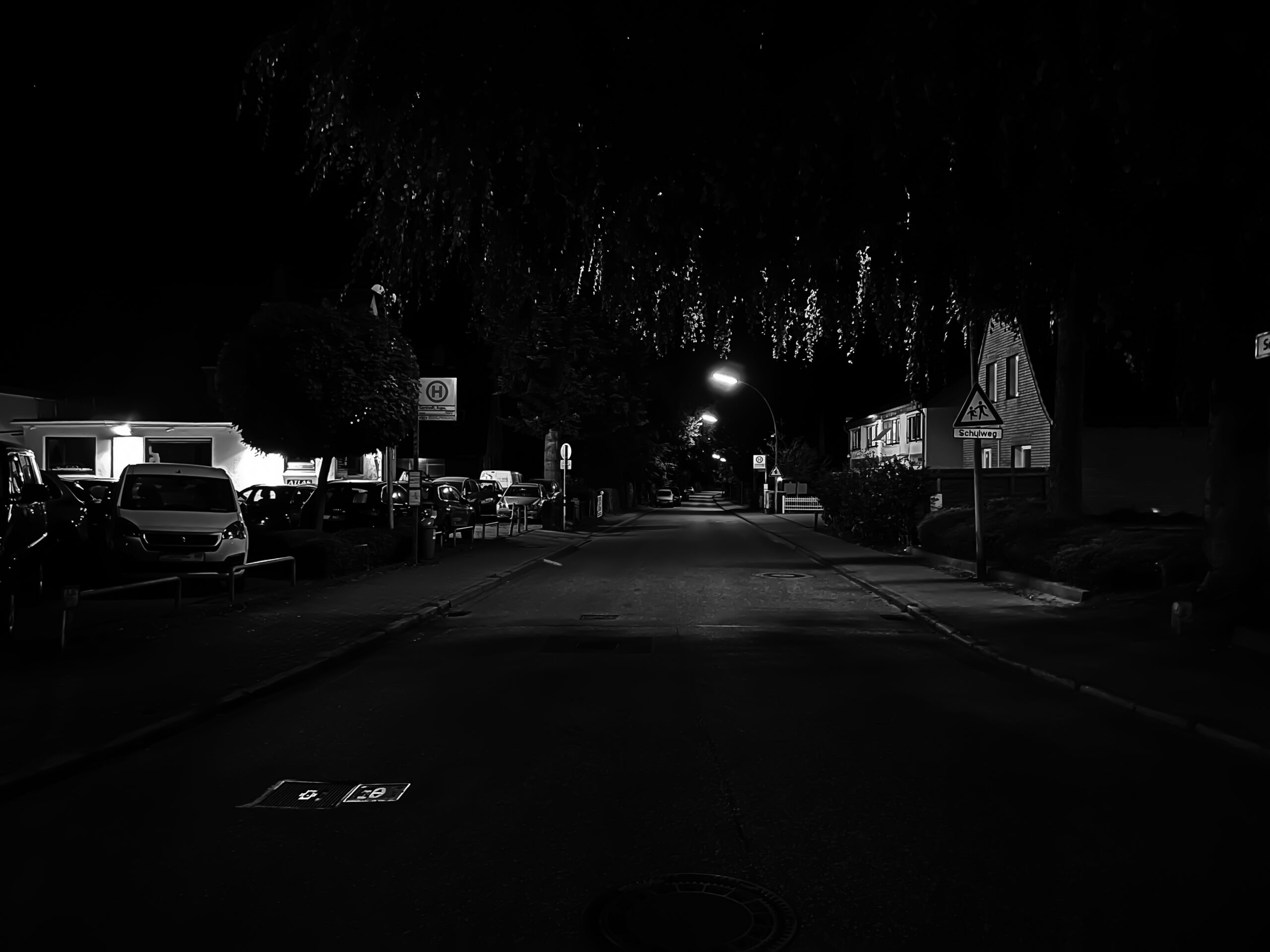
– Coraz częściej współczesny teatr karmi się treściami w postaci bieżących mód i tematów. Robi to, co robiły niegdyś gazety. Politykuje, zajmuje pozycje w kolejnych wojnach, które toczą się wśród nas. Tym samym staje się tylko narzędziem konfrontacji, choć w imię szlachetnych zmian. Problem w tym, że w ostatecznym rozrachunku są to gesty, które nie wychodzą poza sam teatr. Artystki i artyści w tej kwestii znacząco przeceniają swoją rolę. W efekcie teatr zajmuje się wyłącznie sobą nie wnosząc nic istotnego do społecznej debaty. Teatr w moim przekonaniu nie może być tylko narzędziem. Oczywiście, uznaję za wartość sytuację, gdy teatr rodzi się z podważania, niezgody i buntu na zastaną rzeczywistość, gorzej jednak, jeśli na niej tylko poprzestaje. Jak bumerang wraca do mnie hasło Przemysława Czaplińskiego – „królestwo za narrację”. Chciałbym, aby teatr był istotnym pretekstem do spotkania, rozmowy i widocznych zmian. Tyle, że to tylko teatr, który jeśli jeszcze nie zniknął, to na pewno jeszcze nam się nie objawił.
Teatr jest umową społeczną. Najpierw byłem w szoku. Potem czułem złość i niezgodę na to, co się dzieje. Myślałem o tym, że nawet podczas okupacji teatry funkcjonowały.
Znikanie stało się tematem naczelnym spektaklu Chciałbym nie być (2019), składającego się z kilka przejmujących historii ludzkich zniknięć i zaginięć. Otwierają go pingwiny. Stado wychodzi z rozłożonej między skałami kolonii i maszeruje przez pole lodowe w stronę otwartego morza, ku pożywieniu. Tylko jeden zatrzymał się i stoi nieruchomo, jakby się zwiesił. Patrzy w kierunku już to wody, już to bezpiecznego schronienia. Jakby się z tym wszystkim żegnał. Wreszcie rusza. W zupełnie inną, trzecią stronę. Najpierw ku odległym o 70 kilometrów górom. A potem dalej, w głąb kontynentu. Tam, gdzie nie spotka swoich pobratymców; nie znajdzie jedzenia; niczego prócz pewniej śmierci. Jakby stracił głowę. Ale dlaczego? Co nim kieruje? – pyta narrator filmu, którego fragment został zacytowany w przedstawieniu.[1] Pytanie zawisło w próżni. I wisiało nad nami przez cały dalszy ciąg spektaklu.
[1] Spotkania na krańcach świata (2007) w reżyserii Wernera Herzoga.
Trzeci aspekt teatralnego znikania związany jest z pandemią i jej oddziaływaniem na teatr jako instytucję:
– Teatr jest umową społeczną – powiedział Adam. – Przyszła pandemia i administracyjnie zadekretowano zerwanie tej umowy. Poprzez lockdown podważony został sens istnienia teatru.
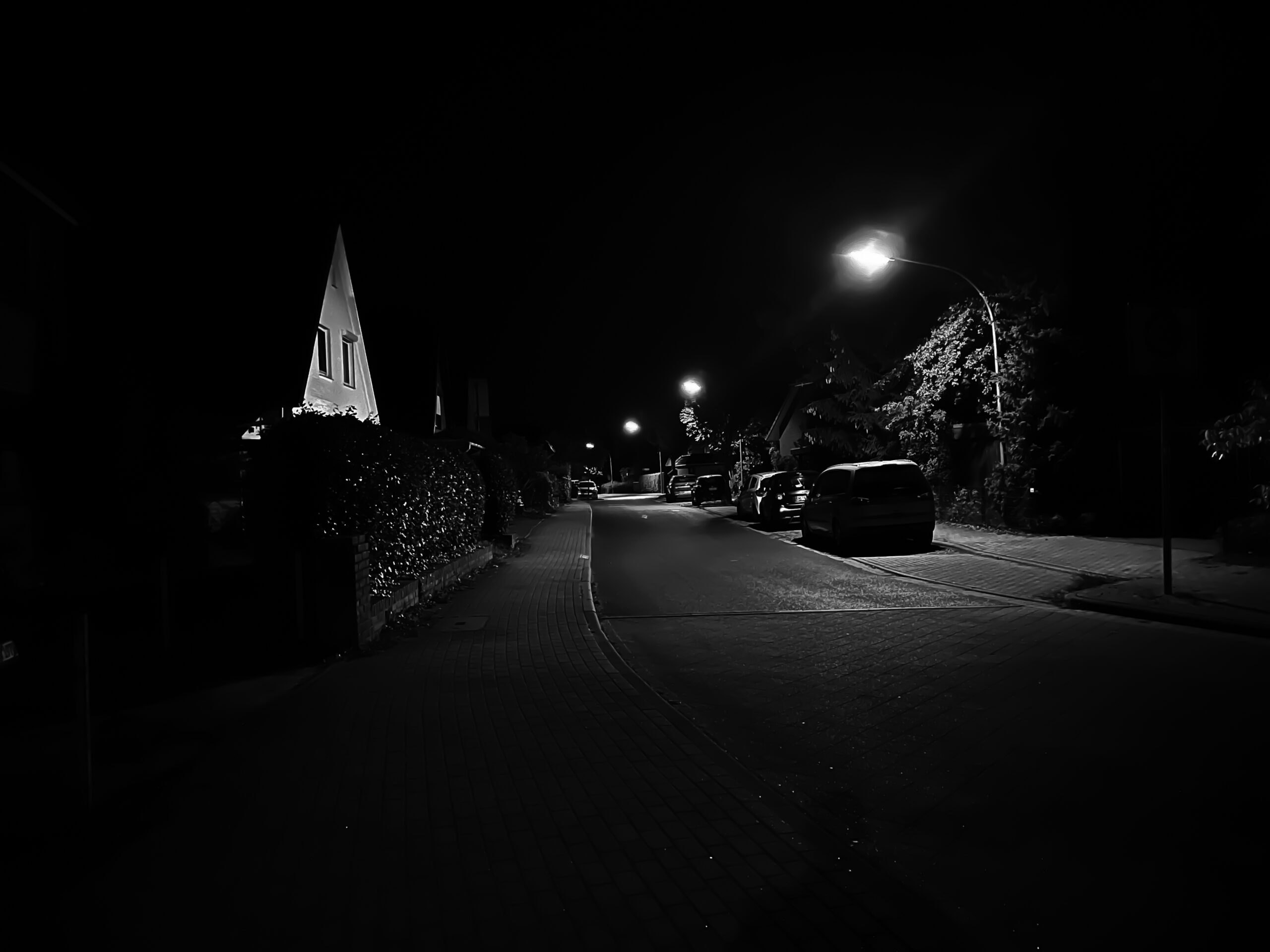
– Jesteś szczepiony? – spytałem.
– Oczywiście – odparł. – Trzecia dawka.
Odetchnąłem z ulgą. Że nie mam do czynienia z jakimś anty-szczepionkowcem.
– Najpierw byłem w szoku. Potem czułem złość i niezgodę na to, co się dzieje. Myślałem o tym, że nawet podczas okupacji teatry funkcjonowały. Niemieckie jawnie oraz te w konspiracji, jak Rapsodyczny czy choćby Kantora. Tymczasem państwo zamknęło teatry, a potem lasy. Nie mogłem się pogodzić z tym, że mój zawód został unieważniony, uznany za zbędny. Przez 30 lat grałem i jeździłem ze spektaklami i nic podobnego nie miało miejsca. Mówię tu oczywiście o pierwszym lockdownie, panującym lęku, niepewności i moich odczuciach. O bezradności. O psychozie, w którą wtedy wszyscy wpadliśmy. Bo nie rozumieliśmy, co się właściwie dzieje. Dziś, w fazie przyboju piątej fali, widzimy i rozumiemy nieco więcej. Ale wtedy działania podejmowane były na oślep. A psychoza była taka, że wychodziłeś z domu do sklepu i spodziewałeś się widoku ludzi umierających w bramach, leżących na chodnikach. Takie wyobrażenia kreowały media serwujące obrazki wojskowych, niekończących się konwojów wywożących zmarłych w Lombardii. Dziś, kiedy oficjalna liczba zakażeń jest bez porównania większa niż wtedy, ograniczenia są, paradoksalnie, nieporównywalnie mniejsze. W Polsce wręcz żadne! Gospodarka działa pełną parą. Chorzy umierają, ale życie kręci się dalej. Teatry grają. Lub próbują grać. Publiczność próbuje być publicznością. Oswoiliśmy się z lękiem. Ale wtedy – wtedy ogarnęło nas szaleństwo. Na chwilę pandemia zniknęła teatr.
By jakoś sobie ze sobą poradzić, odnaleźć w tym czasie zarazy, Adam postanowił zrobić swój pierwszy film. Tak powstała Obecność Obowiązkowa, 25-minutowa fabuła eksperymentalna, z którą teraz odwiedza różne festiwale. Zapis osobistych doświadczeń i refleksji związanych z pierwszymi tygodniami pandemii, z izolacją społeczną. 12 epizodów opartych na tworzonych w tym czasie zapiskach, zwanych przez autora mikrobiami, publikowanych na żywo na fejsbuku.
Pandemia sprawiła, że daliśmy się zamknąć w nieufności.
– Lockdown pozwolił mi jasno zdefiniować sens pracy mojej, pracy wszystkich twórców i twórczyń – wyjaśniał Adam. – Pozwolił zrozumieć, że nadrzędną rolą sztuki jest niwelowanie wszelkich dystansów. Kulturowych, ekonomicznych, intelektualnych, emocjonalnych czy też wręcz fizycznych. Niwelowanie dystansu poprzez, na przykład, zmniejszanie wzajemnej nieufności. Pandemia sprawiła, że ze strachu daliśmy się zamknąć nie tyle w domach, co w tej nieufności właśnie. Dystans stał się normą wyrażoną w administracyjnych metrach. Jest to szczególnie przykre, gdyż jesteśmy mistrzami świata w podejrzliwości i nieufności. Paradoksalnie, z nieufności zdaliśmy egzamin dając się wtedy zamknąć, a teraz ta sama nieufność pozwala nam wierzyć, że pandemia tak naprawdę nie istnieje. Że to spisek jakiś.
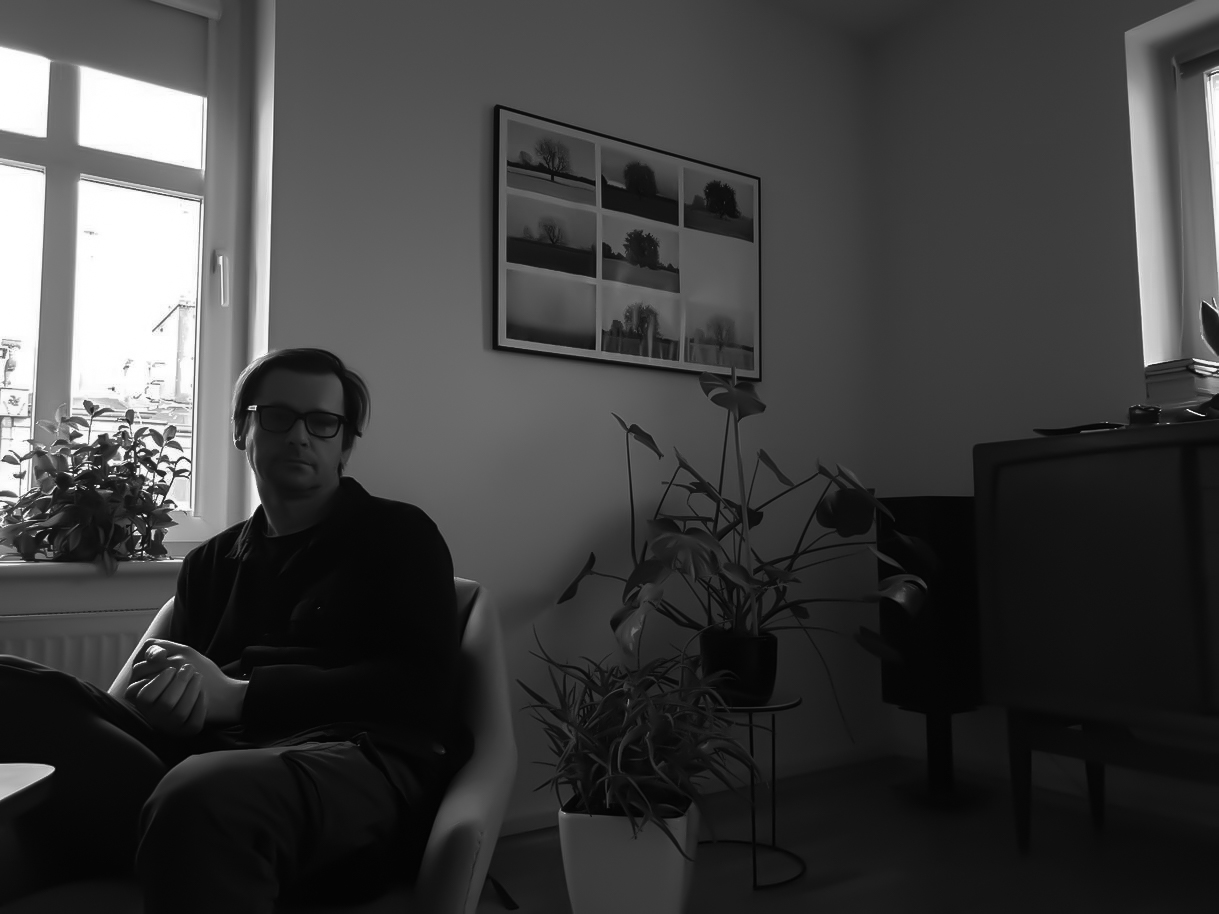
Tę część rozmowy prowadziliśmy już nie u Pana Gara, lecz w mieszkaniu Adama na czwartym piętrze jednej z kamienic na poznańskim Łazarzu, z miłym widokiem na duże podwórko. Które okazało się być nie jednym, lecz kilkunastoma podwórkami – a dokładnie trzynastoma, jak powiedział Adam, bo lubi palić w oknie, więc miał okazję policzyć – sprawiającymi wrażenie jednego organizmu.
Dźwięk nagrywał się tu dużo lepiej, mimo naszej szeleszczącej mowy. Bo mieliśmy ciszę. A i samo mieszkanie wykazywało bardziej sprzyjające właściwości akustyczne.
– Tu nagrywałem większość kwestii mówionych do filmu – powiedział Adam.
Zapytałem o to, jakby podsumował cele teatru i jakie widzi najważniejsze działania, które by do tych celów mogły teatr zaprowadzić. Mówił wcześniej o znikaniu teatru gazetowego i o potrzebie przeciwstawiania się temu, teraz o skracaniu dystansu. Jak to w praktyce przeprowadzić? Jak ukształtuje to przyszłość teatru?
Teatr znika bezpowrotnie za każdym razem, gdy kończy się spektakl

– Teatr znika bezpowrotnie za każdym razem, gdy kończy się spektakl. Niemniej ludzie nie przestaną go praktykować. To przekonanie graniczące z pewnością. Świadczą o tym dwa tysiące lat jego historii i to magnetyczne „tu i teraz”. Choć to, jak będzie w szczegółach wyglądał i czym będzie żył, pozostaje kwestą otwartą. Dzisiaj twórcy snują opowieści o nieobecnych, krytyka i zgodna publiczność przyklaskuje artystom, ale w teatrze nie zobaczysz tych, o których tak hucznie się rozprawia. Nie wiem czy z tej choroby teatr kiedykolwiek się wyleczy. Dlatego przed twórcami, chyba od zawsze, stoi to samo zadanie. Znaleźć właściwą narrację. Teatr w moim przekonaniu powinien być trybuną, przestrzenią oddawaną historiom i ludziom, których głos jest z różnych powodów marginalizowany albo nieobecny. W ten sposób możemy w teatrze odkrywać rzeczy ważne. Teatr jest tylko i aż narzędziem do przeprowadzania małych, ale kluczowych zmian. Małych, bo nie zmienimy całego świata. Ale możemy robić zmiany podwórkowe, zmieniać nasze bańki, w których się zamykamy, samotnie lub wspólnie. Więc jeśli chcę opowiedzieć o starości, o samotności, o odchodzeniu, a o takim temacie teraz myślę, to wiem, że będę szukał głosów tych, którzy odchodzą, którzy są samotni, których starość dotyczy i dotyka, na co dzień, wprost. Teatr to świadectwo. Ważne, by szukać w tym świadectwie prostoty, autentyczności, takiego języka, który pozwala nam się spotkać i zrozumieć. Stąd to MY, bo teatr to liczba mnoga.
W jego spektaklu Nie mów nikomu (2016) Centrum Rezydencji Teatralnej SCENA ROBOCZA stało się trybuną dla osób niesłyszących, w Spójrz na mnie (2018) Adam, do Teatru Śląskiego im. Stanisława Wyspiańskiego w Katowicach, zaprosił niewidzących, w Chciałbym nie być (2019) udzielił głosu członkom rodzin osób zaginionych.
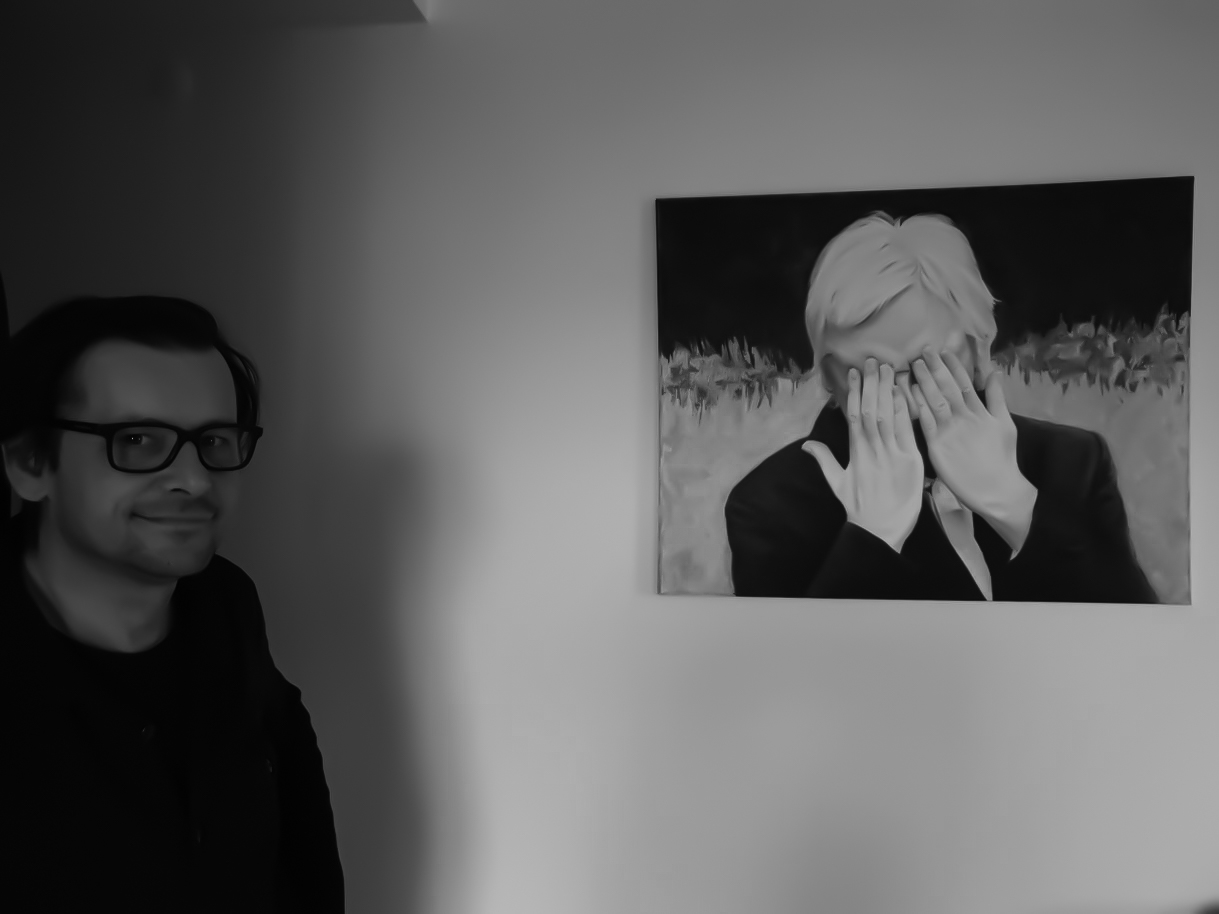
W roli „nieobecnych” występuje w teatrze publiczność. W spektaklu Adama widzowie mają bardziej aktywną rolę. Mogą się wypowiedzieć. Są wręcz do tego zachęcani. Po wysłuchaniu kilku historii o zaginionych Adam jako reżyser obecny na scenie, kieruje kamerę termowizyjną w stronę publiczności. Tak, by każdy mógł próbować rozpoznać siebie na ekranie. Choć nie jest to proste, wszyscy w maseczkach, a okulary to dwie czarne plamy (bo tak termowizja odwzorowuje chłód szkła w trybie negatywu). Termiczno-wizualna analiza widowni trwa kilka minut. W tym czasie głos Krystyny Czubówny pyta z offu (nie pytaj, kogo pyta, pyta zawsze ciebie), czy tobie też zdarzyło się chcieć nie być. A jeśli myślisz, że nie, to lepiej sobie przypomnij. Bo to bardzo powszechne doświadczenie. Zaczyna się często niezauważalnie. “Przy rodzinnym stole, w tramwaju, w niechcianej rozmowie.” Wystarczy chwila nieuwagi, by rozpocząć ten proces, który może skończyć się policyjnym dochodzeniem, poszukiwaniem przez Itakę, wyłowionym z rzeki ciałem. Czubówna tak kończy scenę przeglądu osób obecnych, jeszcze nie “znikniętych”, na widowni: “150 miejsc i wydawałoby się, że tylu ludzi. Tylu ludzi zaginie w ciągu najbliższych dwóch dni. Pierwszy rząd zostanie pusty. Do końca.” Wtedy dopiero dostrzegamy, że pierwszy rząd, faktycznie, jest pusty. To ma nam uświadomić skalę zjawiska. Bo w Polsce ginie rocznie 26 do 28 tysięcy osób. Z tego 60 % odnajduje się w ciągu tygodnia. 20 % nie później niż po miesiącu. Ale 20% nigdy się nie odnajdzie. W której grupie się znajdziemy?
Kiedy się żegnaliśmy, zauważyłem po raz pierwszy obraz wiszący na ścianie w salonie, w którym rozmawiamy. Wcześniej siedziałem do niego plecami. Obraz przedstawia Juliana Assange. Podpis pod obrazem: Lokator iluzji by Katarzyna Mularczyk. Twarzy nie widać, zasłaniają ją dłonie przyłożone do oczu i policzków w czymś, co chyba nie jest gestem rozpaczy. Może niedowierzania? Próbą otrząśnięcia się ze złego snu? Grzbiety dłoni dzielą pierwszy plan z pomarszczonym czołem i siwymi włosami. W tle, za twórcą WikiLeaks, pole czerwonych śladów, może kwiatów? Jak pod Monte Cassino?
Adam bardzo ceni to, co zrobił Assange. Mówi chwilę o tym, jak heroiczny okazał się ten gest. Ma tylko wątpliwości, czy to rzeczywiście cokolwiek zmieniło.

Adam Ziajski jest reżyserem, aktorem, managerem i producentem. Był założycielem i liderem Teatr Strefa Ciszy. Na stałe jest związany ze SCENĄ ROBOCZĄ w Poznaniu, której jest pomysłodawcą i opiekunem artystycznym. Zrealizował blisko 40 tytułów, akcji ulicznych, happeningów, widowisk i spektakli teatralnych, w tym Nie mów nikomu(2016), Spójrz na mnie (2018), Chciałbym nie być (2019). W roku 2021 powstał jego pierwszy film, Obecność obowiązkowa.
Marek Gajdziński jest pisarzem, dramaturgiem, tłumaczem literatury, nauczycielem. Powieści i opowiadania: Spacer do kresu dnia (Iskry, 1989), Głowa konia (Państwowy Instytut Wydawniczy, 1996), Droga do Indii (Zielona Sowa, 2000). Na podstawie opowiadań Tadeusza Różewicza i Marka Gajdzińskiego zrealizowano w Teatrze Telewizji spektakl Badyle (2020) w reżyserii Andrzeja Barańskiego.
Natasza Rogozinska is a trained fashion designer, but she rather focuses on illustration and graphic design. Her works have been showcased in Vogue Poland, i-D Magazine, Kaltblut Magazine, Waste Not exhibition at the IFS Somerset House, London, and others. Natasza is now working on a master project, where she is reviving stories about forgotten women from general history, myths, and legends. She combines traditional and analog techniques such as embroidery and linocut with digital art – to create a feminine chronicle of these forgotten stories. We are prod to present her text and her work.
If you would like to read more of her stories and watch more of her work, you can find them (external link) here.
Marguerite de Bressieux took the field in order to avenge a wrong which she herself had suffered. Her father’s castle had been taken by storm by Louis de Chalons, Prince of Orange; and she herself as well as other maidens, had endured the last insult at the hands of brutal soldiery. That is how it came about that, when the royal troops, under Raoul de Gaucourt, Governor of Dauphine, were marching agains Louis de Chalons, twelve strange and mysterious cavaliers, attired in black, wearing scarfs of crape and carrying a banner which bore the device of an orange transfixed by a lance and the motto „Ainsi tu seras” („Thus you shall be”), greeted the general. Insisting, they were enrolled in the French King’s army. At the battle of Autun they got their chance, and proved their worth. They uncovered their faces to charge; and those who had wronged them recognised them, and took them, in their superstition, for the troubled spirits of the dead, returning to earth for their discomfiture. (Francis Henry Gribble „Women in war”)
Did you know the character? I didn’t either. I found out about Marguerite by utter accident – and it soon turned out that her story is not that rare. My list of Women Who Are Thoroughly Forgotten has 37 names for now – Chinese pirates, Mongolian wrestling princesses, Japanese warriors, and Anglo-Saxon ladies. Women of all historical eras, social classes, and castes, from around the world. What do they have in common? Well, oblivion.
Oblivion, which makes us able to retrieve only the residual information about these characters, leaves us with blank spots, unexplained situations, mysterious circumstances, and unexplored occurrences. This lack of knowledge let my imagination run wild, interpreting the mentioned characters as I see fit – giving them new attributes and characteristics, I shed the proper light on them.
In my dream visions, women are resting beneath the monument of Timocleia – attacked and humiliated by the commander of the Thracian army, for whom it was still insufficient – he urged her to hand over the treasures. „Oh I have them,” she said while she led him to the well, and as soon as he greedily look inside, she pushed him in, throwing stones into the black abyss of the well.
Look over there, is that a hand of lady Godiva holding a chess horse? It may be that her husband, Earl Leofric, agreed to lower the taxes – but only if his dear wife would ride a horse through the city of Coventry – naked.
Reviving these characters, I’m creating the very modern annals of the long bygone times – where imagination and history intersect and where art, femininity, and strength exist.
©by Natasza Rogozinska

